A sentence-by-sentence reading
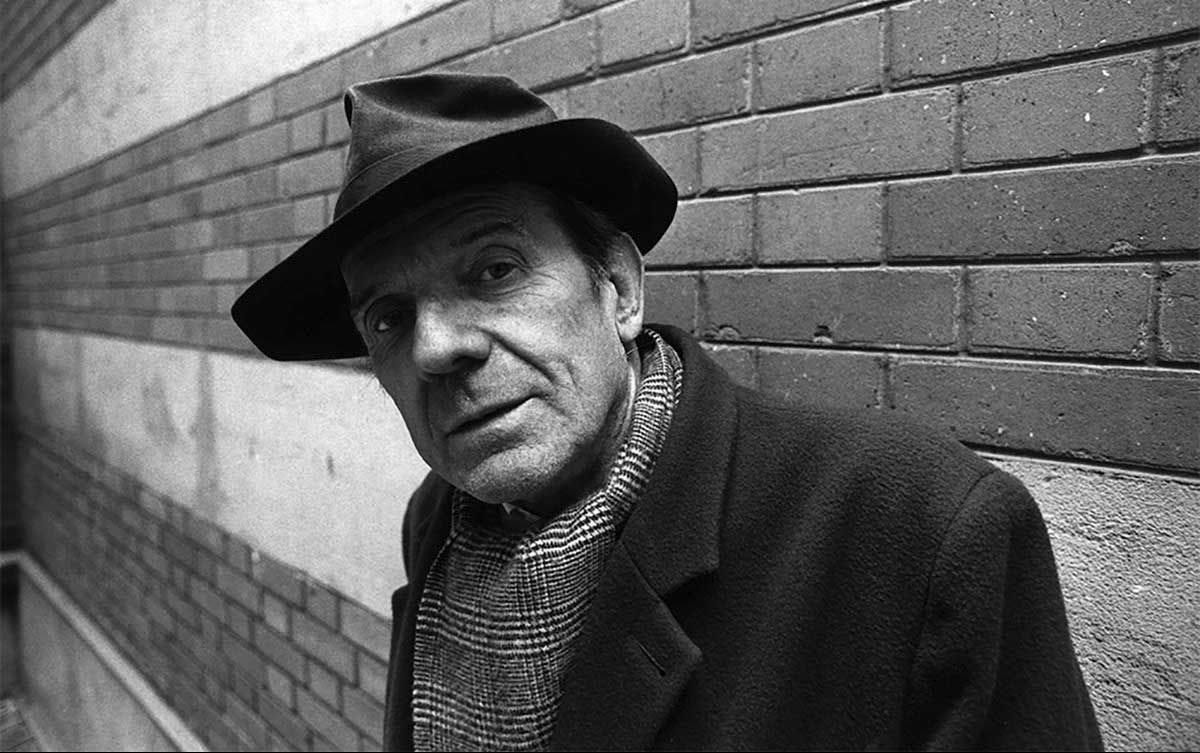
Structuralism. It is a term most of us have heard, but what does it really mean? In philosophical discussions, words often get tossed around casually, detached from their true meaning. And with the emergence of the term “post-structuralism,” it is only natural that confusion arises, making clarification necessary.
Thankfully, in 1967, Deleuze set out to define structuralism. In his essay How do we recognize structuralism? Deleuze begins by recalling a common question that was once frequently asked:
Not long ago we used to ask: What is existentialism?
Now we ask: What is structuralism?
These questions are of keen interest, provided they are timely and have some bearing on work actually in progress.
This is 1967.
Deleuze is correct to highlight that the question of what structuralism is marks a new era (at least during his time). In the earlier part of the 20th century, existentialism was gaining prominence. Philosophers like Jean-Paul Sartre and Albert Camus, despite their differences and tensions, shared a common label: they were both considered existentialists, prompting many to ask what that actually meant. This blog post will not dive into the complexities of existentialism, but it serves to illustrate how new terms emerge as thought evolves over time. Nonetheless, Deleuze writes:
Thus we cannot invoke the unfinished character of such work to avoid a reply, for it is that character alone which gives the question its significance.
So, the question What is structuralism? must undergo certain transformations.
In the first place, who is a structuralist?
Thus, Deleuze begins his exploration by identifying several individuals who were labeled structuralists at the time of his writing:
In the current climate, rightly or wrongly, it is custom- ary to name names [designer], to provide ‘samples’ [echantillonner]: a linguist like Roman Jakobson; a sociologist like Claude Levi-Strauss; a psychoanalyst like Jacques Lacan; a philosopher like Michel Foucault, renewing epistemology; a Marxist philosopher like Louis Althusser, once again taking up the problem of the interpretation of Marxism; a literary critic like Roland Barthes; writers like those from Tel Quel…
Interestingly, this list includes individuals from all kinds of disciplines and thought. In fact, Deleuze himself states:
Of these, some do not reject the word “structuralism,” and use “structure,” “structural.” Others prefer the Saussurean term “system.”
These are all very different kinds of thinkers, and from different generations, and some have exercised a real influence on their contemporaries.
However, the significance of these individuals’ works is not the central focus here. Deleuze writes:
But more import is the extreme diversity of the domains they explore. Each of them discovers problems, methods, solutions that are analogically related, as if sharing in a free atmosphere or spirit of the time, but one that distributes itself into singular creations and discoveries in each of these domains. Ism words, in this sense, are perfectly justified.
Deleuze identifies individuals who explore a wide array of fields, demonstrating how the term “structuralism” can be applied to “an extreme diversity of domains.” From linguistics and sociology to epistemology, Marxism, and even literary studies, structuralism proves to be a versatile concept, capable of application across various disciplines.
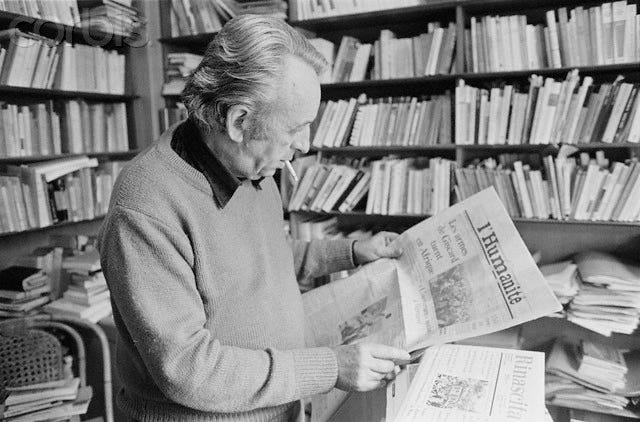
Deleuze continues by attributing the origin of structuralism to linguistics — with both Ferdinand de Saussure and the Moscow and Prague schools. He explains:
There is good reason to ascribe the origin of structuralism to linguistics: not only Saussure, but the Moscow and Prague schools.
And if structuralism then migrates to other domains, this occurs without it being a question of analogy, nor merely in order to establish methods “equivalent” to those that first succeeded for the analysis of language.
In fact, language is the only thing that can properly be said to have structure, be it an esoteric or even nonverbal language.
Although Deleuze emphasizes that language is the only system that can truly be said to have structure, he clarifies that the spread of structuralism to other disciplines is not just a straightforward application of linguistic methods via analogy. It is not about copying a method used in linguistics and applying it to other areas. Instead, as structuralism moves into other domains, it necessitates the discovery of a language that exists in each domain. Deleuze explains:
There is a structure of the unconscious only to the extent that the unconscious speaks and is language.
There is a structure of bodies only to the extent that bodies are supposed to speak with a language which is one of the symptoms.
Even things possess a structure only in so far as they maintain a silent discourse, which is the language of signs.
Deleuze makes a direct reference to psychoanalysis when he describes the unconscious as a language. Later in the essay, Deleuze identifies the French psychoanalyst Jacques Lacan as a structuralist, crediting him with discovering a code to the unconscious. Though the origins of structuralism reside in linguistics, it is evident that language can be uncovered in other disciplines.
In the quote above, we find that even bodies have a structure — not because of their anatomical form, but because they “speak” a kind of language. This language, as Deleuze states, is a symptom of the body, indicating that he is not only referring to verbal expression. Rather, behaviors like nervous ticks and repetitive gestures are a kind of language of their own. These bodily expressions, for psychoanalysis, are read as signs — as symptoms of something deeper or a reflection of the unconscious. Thus, Deleuze argues that everything has a structure, insofar as everything maintains a silent discourse.
Deleuze writes:
So the question What is structuralism? is further transformed — it is better to ask:
What do we recognize in those that we call structuralists? And what do they themselves recognize? — since one does not recognize people, in a visible manner, except by the invisible and imperceptible things they themselves recognize in their own way.
How do the structuralists go about recognizing a language in something, the language proper to a domain?
What do they discover in this domain?
By redirecting the question from ‘What is structuralism?’ to ‘What do we recognize within structuralism?’, Deleuze emphasizes that the proper examination of structuralism requires identifying how language is recognized and operates within particular domains. He writes:
We thus propose only to discern certain formal criteria of recognition, the simplest ones, by invoking in each case the example of cited authors, whatever the diversity of their works and projects.
Therefore, Deleuze isolates seven criteria of structuralism, which will now be discussed.
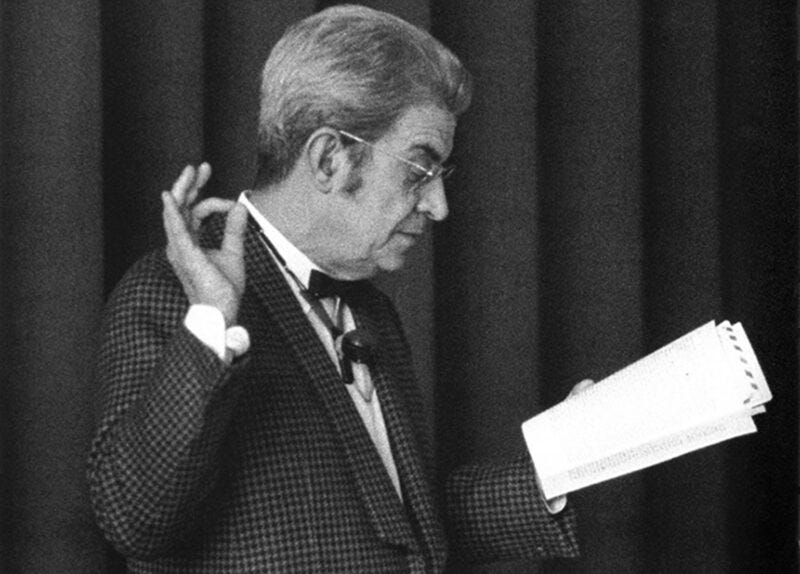
I. First Criterion: The Symbolic
Deleuze begins the description of the first criterion of structuralism by stating:
We are used to, almost conditioned to a certain distinction or correlation between the real and the imaginary.
All of our thought maintains a dialectical play between these two notions.
Even when classical philosophy speaks of pure intelligence or understanding, it is still a matter of a faculty defined by its aptitude to grasp the depths of the real (le reel en son fond), the real “in truth,” the real as such, in opposition to, but also in relation to the power of imagination.
Ranging from classical philosophy to psychology and art, Deleuze notes that we have become conditioned to conceptualize the world via a juxtaposition between the real and the imaginary. In simple terms, the real is understood as objective reality while the imaginary is concerned with internal representations (such as unconscious drives, dreams, fantasies, and so on). The dualistic nature between the real and the imaginary has trapped us into a reductive framework: real vs. imaginary, truth vs. illusion. Deleuze writes:
Let us cite some creative movements that are quite different: Romanticism, Symbolism, Surrealism… In doing so, we invoke at once the transcendent point where the real and the imaginary interpenetrate and unite, and their sharp border, like the cutting edge of their difference.
In artistic movements such as Romanticism, Symbolism, and Surrealism, we observe a distinctive interplay between the real and the imaginary. The “transcendent point” that Deleuze highlights in these traditions refers to a space where the real and the imaginary interpenetrate and converge. Yet, despite this supposed unity between reality and fantasy, a sharp distinction between the two is always maintained.
He reiterates this point:
In any case, we get no farther than the opposition and complementarity of the imaginary and the real — at least in the traditional interpretation of Romanticism, Symbolism, etc.
Deleuze also recognizes that classical psychoanalysis falls into this trap:
Even Freudianism is interpreted from the perspective of two principles: the reality principle with its power to disappoint, the pleasure principle with its hallucinatory power of satisfaction.
With all the more reason, methods like those of Jung and Bachelard are wholly inscribed within the real and the imaginary, within the frame of their complex relations, transcendent unity and liminary tension, fusion and cutting edge.
Within Sigmund Freud’s thought, there exists both the reality principle and the pleasure principle. Even when these concepts appear to merge, there is always a distinction present between the two. Deleuze also references Carl Jung and Gaston Bachelard to emphasize this point.
With this in mind, Deleuze explains the first criterion of structuralism:
The first criterion of structuralism, however, is the discovery and recognition of a third order, a third regime: that of the symbolic.
The discovery of a third order or regime — an order that is not the real or the imaginary — is descriptive of the first criterion of structuralism. Deleuze writes:
The refusal to confuse the symbolic with the imaginary, as much as with the real, constitutes the first dimension of structuralism.
He emphasizes that the symbolic must not be conflated with either the real or the imaginary. Rather, the symbolic constitutes a distinct domain with its own structure and set of relations. Deleuze explains how, once again, the discovery of the symbolic was first found in linguistics and began to be uncovered in other domains:
In this case again, everything began with linguistics: beyond the word in its reality and its resonant parts, beyond images and concepts associated with words, the structuralist linguist discovers an element of quite another nature, a structural object.
The structural linguist, as Deleuze states, “discovers an element of quite another nature, a structural object” in the same manner as the novelists of Tel Quel, Michel Foucault, and Louis Althusser do in their respective fields:
And perhaps it is in this symbolic element that the novelists of Tel Quel wish to locate themselves, in order to renew the resonant realities as well as the associated narratives.
Beyond the history of men, and the history of ideas, Michel Foucault discovers a deeper, subterranean ground that forms the object of what he calls the archaeology of thought.
Behind real men and their real relations, behind ideologies and their imaginary relations, Louis Althusser discovers a deeper domain as object of science and of philosophy.
In the context of Lacanian psychoanalysis, Deleuze writes:
We already had many fathers in psychoanalysis: first of all, a real father, but also father-images. And all our dramas occurred in the strained relations of the real and the imaginary. Jacques Lacan discovers a third, more fundamental father, a symbolic father or Name-of-the-Father.
Deleuze credits Lacan for “discover[ing] a third, more fundamental father, a symbolic father or Name-of-the-Father.” This departure from Freudian psychoanalysis is an important one — the concept father no longer solely exists at the level of the real or the imaginary, but rather, in the symbolic, structuring signification.
Deleuze explains:
Not just the real and the imaginary, but their relations, and the disturbances of these relations, must be thought as the limit of a process in which they constitute themselves in relation to the symbolic.
The real and the imaginary should not be understood solely as independent entities, but rather through their relations to one another — relations that are intrinsically tied to a process that is fundamentally structured by the symbolic. Deleuze continues:
In Lacan’s work, in the work of other structuralists as well, the symbolic as element of the structure constitutes the principle of a genesis: structure is incarnated in realities and images according to determinable series.
Moreover, the structure constitutes series by incarnating itself, but is not derived from them since it is deeper, being the substratum both for the strata of the real and for the heights [dels] of imagination.
It is at this point that Deleuze highlights the symbolic as essential to the formation of structure. Structures are “incarnated in realities and images” through determinate sequences or series. This idea is echoed in Lacan’s Seminar on The Purloined Letter, where he identifies a specific code of the the unconscious that is structured by a chain of signifiers. Through this framework, Lacan is able to interpret the analysand’s behaviors and affective states by reading them through the symbolic order:
Conversely, catastrophes that are proper to the symbolic structural order take into account the apparent disturbances of the real and the imaginary: thus, in the case of The Wolf Man as Lacan interprets it, the theme of castration reappears in the real since it remains non-symbolized (“foreclosure”), in the hallucinatory form of the cut finger.
In the case of The Wolf Man, Lacan is able to successfully examine the symbolic order and the particular exclusions, foreclosures, and catastrophes that return to the the real in a hallucinatory form. Regardless of the specificities, the general argument is as followed: the first criterion of structuralism is the introduction of the symbolic. As Lacanian psychoanalysis emphasizes the three registers — the real, the imaginary, and the symbolic — these registers are read sequentially. Deleuze writes:
We can enumerate the real, the imaginary, and the symbolic: 1, 2, 3. But perhaps these numerals have as much an ordinal as a cardinal value.
First, we begin with the real. Deleuze finds the real to not exist outside the realm of a particular ideal or unification:
For the real in itself is not separable from a certain ideal of unification or of totalization: the real tends towards one, it is one in its “truth.” As soon as we see two in “one,” as soon as we make doubles [de’doublons], the imaginary appears in person, even if it is in the real that its action is carried out. For example, the real father is one, or wants to be according to his law; but the image of the father is always double in itself, cleaved according to a law of the dual or duel.
Second, we move to the imaginary. In the imaginary, a doubling occurs when we find two to be in “one” (the real). Though the specific action may be carried out in the real, this does not entail the absence of a doubling. In the case of the father, the real father is the one. Yet, within this one, we find a double due to imaginary identifications. Deleuze writes:
[The imaginary identification] is projected onto two persons at least, one assuming the role of the play- father, the father-buffoon, and the other, the role of the working and ideal father: like the Prince of Wales in Shakespeare, who passes from one father image to the other, from Falstaff to the Crown.
Deleuze continues by defining the Imaginary register:
The imaginary is defined by games of mirroring, of duplication, of reversed identification and projection, always in the mode of the double.
This “game of mirroring” is evident in the figure of the father: what begins as a singular, real father is soon split into two distinct images — a playful father and a strict father.
Third, we encounter the symbolic:
But perhaps, in turn, the symbolic is three, and not merely the third beyond the real and the imaginary. There is always a third to be sought in the symbolic itself; structure is at least triadic, without which it would not “circulate”— a third at once unreal, and yet not imaginable.
This is not a simple third addition to the previous two concepts. Instead, Deleuze notes that the symbolic itself has a triadic structure. As Deleuze says: “there is always a third to be sought in the symbolic itself.” He seems to be isolating how psychoanalysis focuses on the rule of three: mommy-daddy-me, ego-id-supergo.
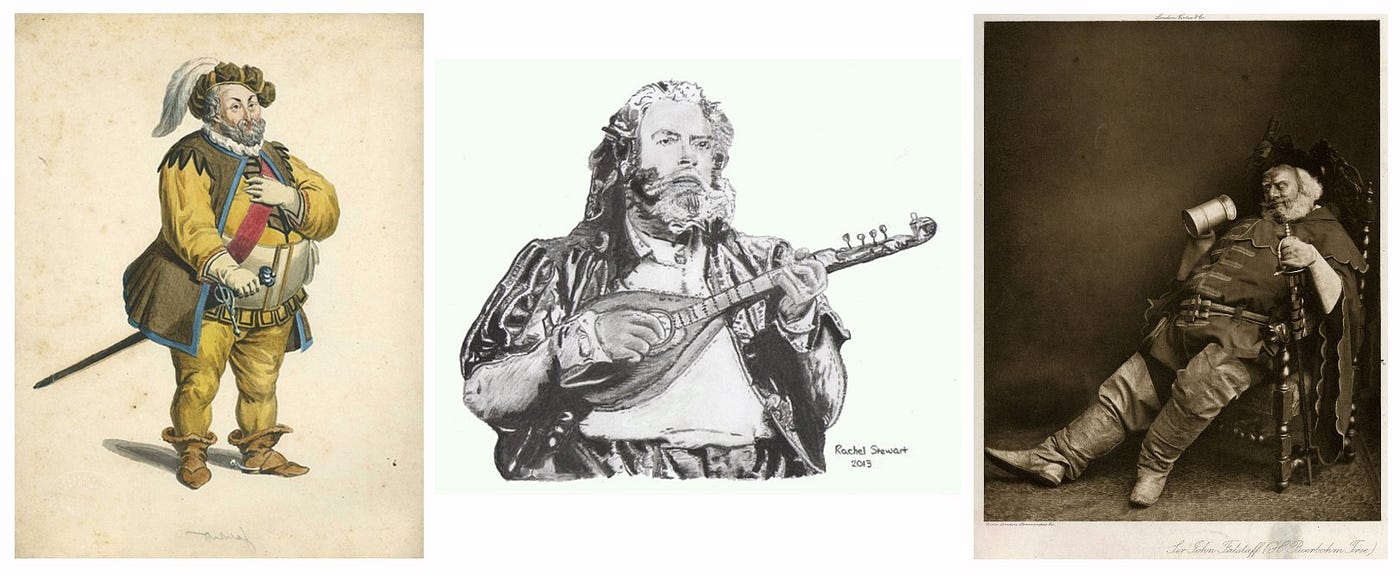
We must remember the first criterion of structuralism:
We will see why later; but already the first criterion consists of this: the positing of a symbolic order, irreducible to the orders of the real and the imaginary, and deeper than they are.
Once again, the symbolic is not solely a third addition, but something more fundamental to the discipline it constitutes. However, the symbolic is not straight-forward either:
We do not yet know what this symbolic element consists of. We can say at least that the corresponding structure has no relationship with a sensible form, nor with a figure of the imagination, nor with an intelligible essence.
Deleuze highlights three areas that the symbolic has no relationship with — form, figure of the imaginary, and essence.
In the context of form, the symbolic has no relation to it. Deleuze writes:
It has nothing to do with a form: for structure is not at all defined by an autonomy of the whole, by a preeminence [pregnance] of the whole over its parts, by a Gestalt which would operate in the real and in perception.
Deleuze finds the symbolic to be a “structure is not at all defined by an autonomy of the whole” or a whole having prioritization over its parts. There is nothing physically tangible to the symbolic; the symbolic is content without form in the sense that it creates meaning and relationships between elements without being a concrete entity in its own right. Deleuze defines structure in the context of the symbolic:
Structure is defined, on the contrary, by the nature of certain atomic elements which claim to account both for the formation of wholes and for the variation of their parts.
It has nothing to do with figures of the imagination, although structuralism is riddled with reflections on rhetoric, metaphor and metonymy, for these figures themselves imply structural displacements which must account for both the literal and the figurative.
In the context of the figure of the imaginary, the symbolic has no relation to it. Even though structuralism is “riddled with reflections on rhetoric” and explained in terms of “metaphor and metonymy,” structure itself is not rooted in imagination. The reality is that structure defines the relations between imaginary identification.
In the context of essence, the symbolic has no relation to it. Instead, Deleuze writes:
Nor has it has anything to do with an essence:
[Structure] is more a combinatory formula supporting formal elements which by themselves have neither form, nor signification, nor representation, nor content, nor given empirical reality, nor hypothetical functional model, nor intelligibility behind appearances.
Explaining structure in terms of a “combinatory formula” highlights how structure acts as a framework that supports the combination of various elements. However, this does not indicate that structure has inherent essence or predefined meaning. Instead, structure is concerned only with the arrangement of basic units — like building blocks — that, on their own, lack form, signification, content, and so on. It is through the process of combining elements that meaning emerges. Deleuze idenfies Althusser as determining the status of the structure most effectively:
No one has better determined the status of the structure as identical to the “Theory” itself than Louis Althusser — and the symbolic must be understood as the production of the original and specific theoretical object.
To conclude this first criterion, Deleuze notes that structuralism can take on both aggressive and interpretive roles.
Sometimes structuralism is aggressive, as when it denounces the general misunderstanding of this ultimate symbolic category, beyond the imaginary and the real.
Sometimes it is interpretative, as when it renews our interpretation of works in relation to this category, and claims to discover an original point at which language is constituted, in which works elaborate themselves, and where ideas and actions are bound together.
In its aggressive mode, structuralism “denounces the general misunderstanding of this ultimate symbolic category” through a criticism. In its interpretive mode, structuralism is applied to fields and disciplines that previously lacked this framework. Furthermore:
Romanticism and Symbolism, but also Freudianism and Marxism, thus become the objects of profound reinterpretations.
Not to mention the mythical, poetic, philosophical, or practical works which themselves are subjected to structural interpretation.
But this reinterpretation only has value to the extent that it animates new works which are those of today, as if the symbolic were the source, inseparably, of living interpretation and creation.
Structuralism offers renewed interpretation of artistic movements and theoretical movements like Romanticism, Symbolism, and Surrealism and Freudian psychoanalysis.
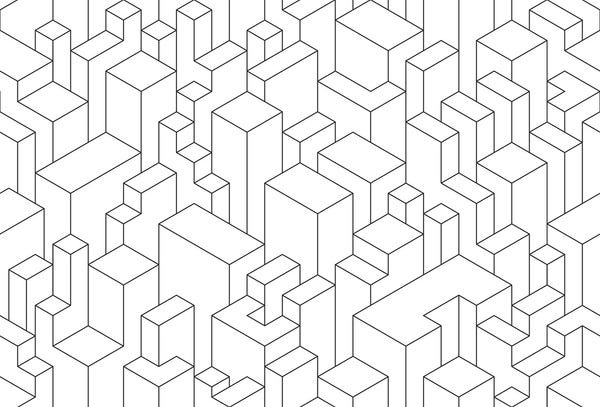
II. Second Criterion: Local or Positional
Deleuze begins to explain the second criterion by clarifying that we must first conceptualize what structuralism is not:
What does the symbolic element of the structure consist of? We sense the need to go slowly, to state repeatedly, first of all, what it is not.
Deleuze reiterates from the previous section:
Distinct from the real and the imaginary, the symbolic cannot be defined either by pre-existing realities to which it would refer and which it would designate, or by the imaginary or conceptual contents which it would implicate, and which would give it a signification.
The symbolic cannot be categorized within the realm of the real or the imaginary as it is its own register. Nor can it be defined by something that pre-exists it or a kind of imaginary identification. Therefore:
The elements of a structure have neither extrinsic designation, nor intrinsic signification.
Then what is left?
Yet, if the elements of a structure are not defined by a register external to them, nor do they have some kind of pre-existing reality or essence, Deleuze begs the question: Then what is left? Thankfully, Deleuze answers the question by drawing from French anthropologist Claude Lévi-Strauss:
As Levi-Strauss recalls rigorously, they have nothing other than a sense [sens = meaning and direction]: a sense which is necessarily and uniquely “positional.”
This answer is largely intuitive given that elements in a system are defined by their relation to each other. Though, what must be noted is that the positional relations that elements have in relation to one another does not exist within a “real spatial expanse” but rather of “places and sites in a properly structural space, that is, a topological space.” As Deleuze writes:
It is not a matter of a location in a real spatial expanse, nor of sites in imaginary extensions, but rather of places and sites in a properly structural space, that is, a topological space. Space is what is structural, but an unextended, pre-extensive space, pure spatium constituted bit by bit as an order of proximity, in which the notion of proximity first of all has precisely an ordinal sense and not a signification in extension.
To illustrate this idea, Deleuze gives an analogy:
Or take genetic biology: the genes are part of a structure to the extent that they are inseparable from “loci,” sites capable of changing their relation within the chromosome.
To sum up this second criterion succinctly, Deleuze states:
In short, places in a purely structural space are primary in relation to the things and real beings which come to occupy them, primary also in relation to the always somewhat imaginary roles and events which necessarily appear when they are occupied.
The example of genetics illustrates that the significance of genes lies not in their physical existence, but their position within a larger structure. As Deleuze writes:
The scientific ambition of structuralism is not quantitative, but topological and relational, a principal that Levi-Strauss constantly reaffirms.
Structuralism has a scientific ambition in the sense that it aims to be systematic and rigorous. However, this ambition is not quantitative — it does not focus on measuring elements in numerical or spatial terms. Instead, structuralism analyzes elements topologically and relationally, meaning it examines their positions and relationships relative to one another within a structure.
At this juncture, Deleuze applies this principle to Althusser and Foucault:
And when Althusser speaks of economic structure, he specifies that the true “subjects” there are not those who come to occupy the places, i.e. concrete individuals or real human beings — no more than the true objects are the roles that they fulfill and the events that are produced.
Rather, these “subjects” are above all the places in a topological and structural space defined by relations of production.
When Foucault defines determinations such as death, desire, work, or play, he does not consider them as dimensions of empirical human existence, but above all as the qualifications of places and positions which will render those who come to occupy them mortal and dying, or desiring, or workman-like, or playful.
These, however, only come to occupy the places and positions secondarily, fulfilling their roles according to an order of proximity that is an order of the structure itself.
That is why Foucault can propose a new distribution of the empirical and the transcendental, the latter finding itself defined by an order of places independently of those who occupy them empirically
What is most noticeable is how Deleuze relates structuralism to the transcendental; the structure presupposes the condition for experience itself:
Structuralism cannot be separated from a new transcendental philosophy, in which the sites prevail over whatever occupies them.
Without going into too much depth regarding transcendentalism, what is important to note is the role of sites within a structure. Deleuze writes:
Father, mother, etc., are first of all sites in a structure; and if we are mortal, it is by moving into the line, by coming to a particular site, marked in the structure following this topological order of proximities (even when we do so ahead of our turn).
Deleuze describes positions like “father” or “mother” as structural sites — places within a system that subjects can come to occupy. A subject may take up the role of ‘father’ within this structure, but this does not mean they are a father in the literal or biological sense. Rather, this subject inhabits a symbolic position defined by its relational function. To know what a father is, we must know that a father is not a mother, not a child, and so on.
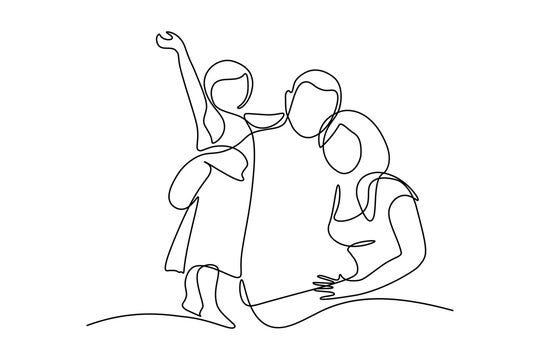
Deleuze continues by citing Lacan:
“It is not only the subject,” says Lacan, “but subjects grasped in their inter- subjectivity, who line up… and who model their very being on the moment of the signifying chain which traverses them… The displacement of the signifier determines subjects in their acts, in their destiny, in their refusals, in their blindnesses, in their conquests and in their fate, their innate gifts and social acquisition notwithstanding, without regard for character or sex…”
This quote is directly from Lacan’s Seminar on The Purloined Letter where he explains the symbolic in great detail. Lacan explains that, in the context of the symbolic order, we are not dealing with an individual subject, but rather an “intersubjective modulus” with each individual occupying a site in the signifying chain. In the context of Lacan’s seminar, (the purloined letter acts as a pure signifier that moves throughout the signifying chain). The placement of this signifier (it might be appropriate to say “displacement”) “determines subjects in their acts.” Deleuze continues by praising Lacan for his discovery:
One could not say more clearly that empirical psychology is not only founded, but determined by a transcendental topology.
This reference to Lacan’s Seminar on The Purloined Letter is not the first or last time Deleuze references the seminar. You can find my blog post on Lacan’s seminar here.
Furthermore, Deleuze posits three consequences to this local or positional development that designates the second criterion:
Several consequences follow from this local or positional criterion.
Let’s review these consequences now:
The first consequence is concerned with sense (meaning). In a bit of an awkward sentence, Deleuze writes:
First of all, if the symbolic elements have no extrinsic designation nor intrinsic signification, but only a positional sense, it follows necessarily and by rights that sense always results from the combination of elements which are not themselves signifying?
Meaning emerges from the relational positions of elements within a structure, rather than being imposed externally or contained intrinsically within elements themselves. To clarify this first consequence, Deleuze writes:
As Levi-Strauss says in his discussion with Paul Ricoeur, sense is always a result, an effect: not merely an effect like a product, but an optical effect, a language effect, a positional effect.
It is evident that sense is not a product — something produced by a system. But rather, it is an inevitable effect, constantly emerging as elements change their positions within a structure. Deleuze writes:
There is, profoundly, a nonsense of sense, from which sense itself results. Not that we return in this way to what was once called a philosophy of the absurd since, for such a philosophy, sense itself is lacking, essentially.
Deleuze calls this notion of meaning being an effect “nonsense of sense” as sense is an effect of elements within a structure and not independent in its own right. Deleuze writes:
For structuralism, on the other hand, there is always too much sense, an overproduction, an over-determination of sense, always produced in excess by the combination of places in the structure. (Hence the importance, in Althusser’s work for example, of the concept of over-determination.)
However, he makes clear that this does not indicate absurdism as this kind of nonsenese:
Nonsense is not at all the absurd or the opposite of sense, but rather that which gives value to sense and produces it by circulating in the structure. Structuralism owes nothing to Albert Camus, but much to Lewis Carroll.
This clarification emphasizes that Albert Camus’ existentialist theory of the absurd does not align with structuralist thought. Nonsense is not opposed to sense; rather, it gives sense its value by crafting circulation within a structure, granting meaning a fluidity.
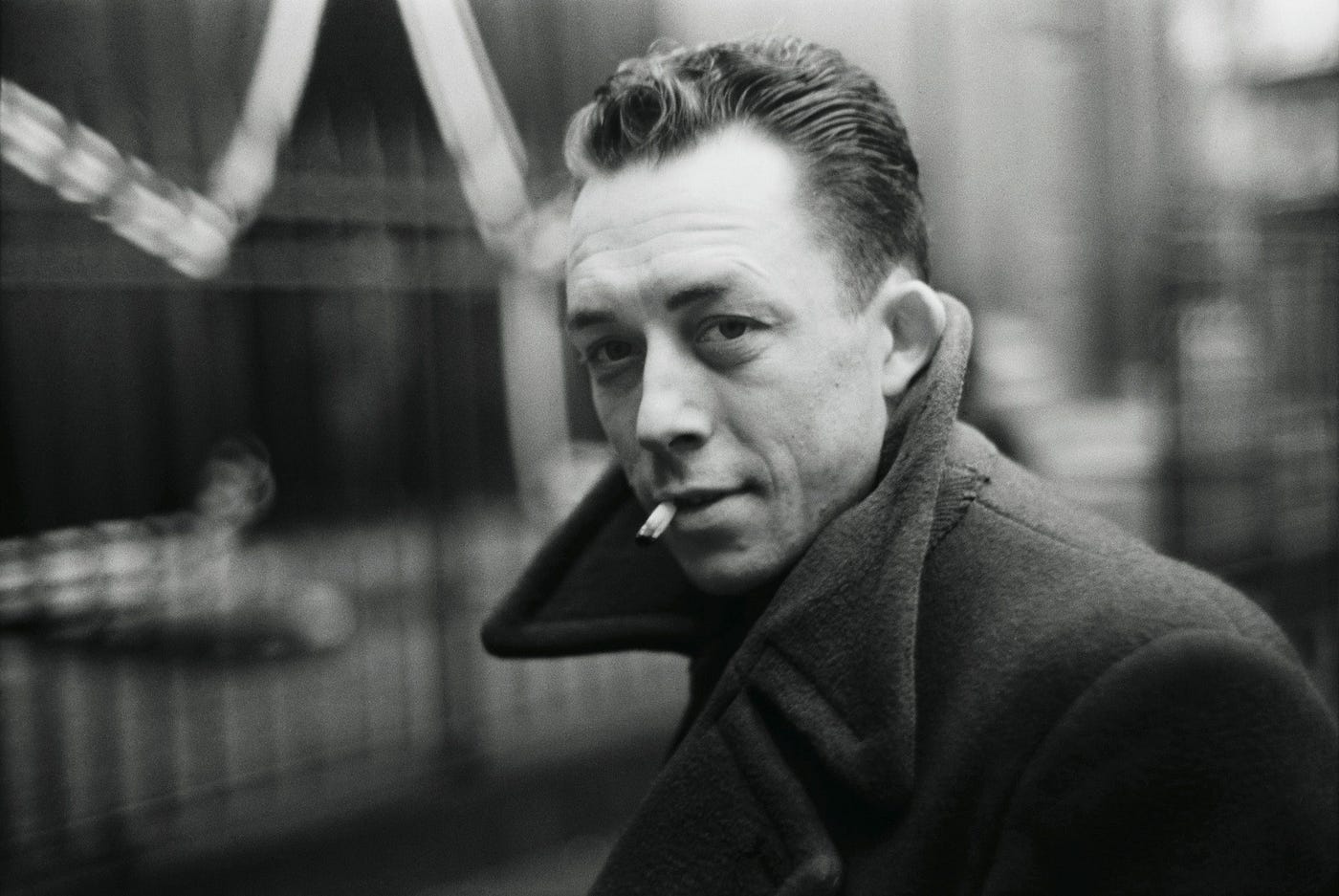
The second consequence is concerned with theatrics. Deleuze writes:
The second consequence is structuralism’s inclination for certain games and a certain kind of theatre, for certain play and theatrical spaces.
As Deleuze observes, structuralist theories are often closely linked to games. He gives examples of structuralist thinkers who utilize games to describe their thought:
It is no accident that Levi-Strauss often refers to the theory of games, and accords such importance to playing cards.
As does Lacan to his game metaphors which are more than metaphors: not only the moving object [lefuret, literally the ferret; or, moving token in the jeu de furet, the game of hunt-the-slipper] which darts around the structure, but also the dummy-hand [la place du mort] that circulates in bridge.
The examples of Levi-Strauss and Lacan exemplify the use of games in depicting structuralist thought. Without going into detail regarding the specificities of how these thinkers utilize games, Deleuze continues by giving an example of a game relating to structuralist thought:
The noblest games such as chess are those that organize a combinatory system of places in a pure spatium infinitely deeper than the real extension of the chessboard and the imaginary extension of each piece.
Or when Althusser interrupts his commentary on Marx to talk about theatre, but a theatre that is neither of reality nor of ideas, a pure theatre of places and positions, the principle of which he sees in Brecht, and that would today perhaps find its most extreme expression in Armand Gatti’s work.
Chess is a wonderful example of how structuralism engages with games. When conceptualizing the symbolic in relation to chess, we find that meaning arises from the position of pieces on the board. The real may be understood as the material reality of the game — the physical board and pieces. The imaginary involves the identifications and images projected onto the pieces: the queen is powerful, the king is weak, and so on. The symbolic constitutes the underlying structure — there are rules and codes that give the game meaning. We must remember that this meaning is not innate but rather understood in relation to elements that are in relation to another: a gridded board, pawns placed in certain squares, etc. It is the symbolic that makes the concepts of winning/losing possible.
Deleuze concludes this second consequence by stating:
In short, the very manifesto of structuralism must be sought in the famous formula, eminently poetic and theatrical: to think is to cast a throw of the dice [penser, c’est e’met- tre un coup de des].
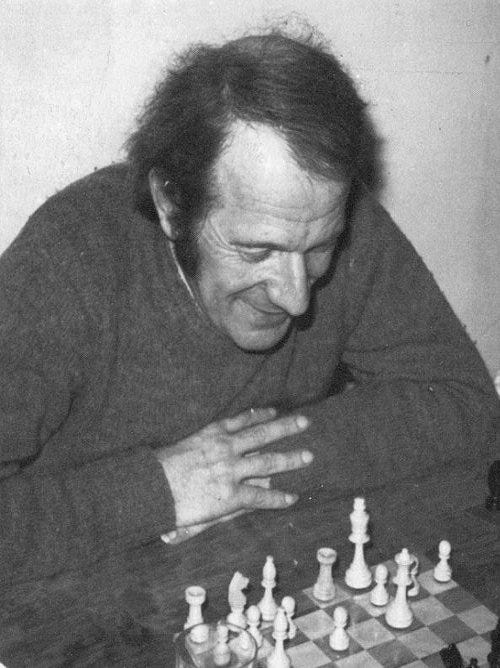
The third consequence is concerned with departing from the old:
The third consequence is that structuralism is inseparable from a new materialism, a new atheism, a new anti-humanism.
Deleuze speaks of structuralism introduction a deviation from older schools of thought dealing with materialism, atheism, and humanism. For Deleuze, material existence, notion of transcendence and immance, and subjectivity are all implicated by structuralism. Structuralism offers a new manner in which we are able to examine these concepts. He writes:
For if the place is primary in relation to whatever occupies it, it certainly will not do to replace God with man in order to change the structure.
Place and position is prioritized within structuralism. Whatever comes to occupy these places is important, with meaning being contingent upon the relations of these elements, but place itself is what structuralism examines. In the context of God, Deleuze notes the impossibility of changing the structure by replacing God with man. To position man at the center, instead of God, fails to recognize that there is no centrality for the structuralist. Furthermore:
And if this place is the dummy-hand [la place du mort, i.e. the dead man’s place], the death of God surely means the death of man as well, in favor, we hope, of something yet to come, but which could only come within the structure and through its mutation. This is how we understand the imaginary character of man for Foucault or the ideological character of humanism for Althusser.
The reference to the “dead man’s place” refers to a card game that continues even if a player is physically absent — though their cards tend to stay on the table. (This might happen if someone uses the restroom quickly or grabs a snack.) The game continues because of the position — this highlights how the placement of man in God’s place does not change the structure. When Friedrich Nietzsche states that “God is dead,” the structuralist surely responds with “so is man.” Therefore, a new kind of subjectivity must arise. As Deleuze noted above, structuralism cannot be divorced from a new anti-humanism.
Deleuze concludes this third consequence by noting Foucault’s discovery. That is, Foucault’s conceptualization as man emerging via relation elements within structures that produce it.
III. Third Criterion: The Differential and the Singular
When examining the third criterion of structuralism, Deleuze begins by returning to the linguistic model:
What then do these symbolic elements or units of position finally consist of? Let us return to the linguistic model.
What is distinct both from the voiced elements, and the associated concepts and images, is called a phoneme, the smallest linguistic unit capable of differentiating two words of diverse meanings: for example, “Millard” [billiard] and “/>illard” [pillager].
A phoneme is the smallest unit of sound that differentiates words. In the example above, the word “Millard” contrasts with another word that has a letter in front of “-illard” — such as “pillager” in certain interpretations. More straightforward examples include the words “bat” and “pat,” where the phonemes /b/ and /p/ create their difference. Deleuze emphasizes that phonemes are distinct from “voiced elements,” meaning that they are not solely random sounds nor are they tied to a specific image or concept. Phonemes are the fundamental units of language that make differences possible. Deleuze notes:
It is clear that the phoneme is embodied in letters, syllables and sounds, but that it is not reducible to them.
Moreover, letters, syllables and sounds give it an independence, whereas in itself, the phoneme is inseparable from the phonemic relation which unites it to other phonemes: b / p.
Phonemes do not exist independently of the relations into which they enter and through which they reciprocally determine each other.
Once again, the phoneme cannot be reduced simply to a sound or concept — even though we express phonemes through specific sounds and written characters we call letters. What is importance is that each phoneme exists within a “phonemic relation.” This means that the function of each phoneme emerges only in relation to other phonemes. In terms of this relation, Deleuze states:
We can distinguish three types of relation.
Let us review these three types of relation now:
“A first type is established between elements which enjoy independence or autonomy: for example, 3 + 2, or even 2 / 3. The elements are real, and these relations must themselves be said to be real.”
This first type of relation is a real relation. There are independent elements that have determined and specific values.
“A second type of relationship, for example, x2 + y2 — R2 = 0, is established between terms for which the value is not specified, but which in each case, how- ever, must have a determined value. Such relations can be called imaginary.”
The second type of relation is an imaginary relation. Unlike real relations, where elements have determined, actual values, the elements in imaginary relations are undetermined in themselves. In the example x² + y² — R² = 0, x, y, and R do not have fixed values by themselves, but the structure of the equation requires that they each take on a determined value in a given instance. These terms are not defined by their relation to one another, but by their arrangement within the equation. For example, if x changes, y changes as a consequence — not due to a reciprocal determination with x, but because of how the equation as a whole constrains possible values.
“But the third type is established between elements which have no determined value themselves, and which nevertheless determine each other reciprocally in the relation: thus ydy + xdx = 0, or dy-/ dx = — x/y. Such relationships are symbolic, and the corresponding elements are held in a differential relationship. Dy is totally undetermined in relation to y, and dx is totally undetermined in relation to x: each one has neither existence, nor value, nor signification. And yet the relation dy/dx is totally determined, the two elements determining each other reciprocally in the relation.”
The third type of relation is a symbolic relation. Unlike real and imaginary relations, symbolic relations involve elements that have no independent value or existence on their own. Instead, they are defined purely through their reciprocal determination within the relation itself. Deleuze illustrates this with differential calculus: elements like dx and dy do not have independent existence, value, or signification by themselves. Yet, in the relation dy/dx, each is determined only through the other, and the relationship itself is fully determined. Deleuze writes:
This process of a reciprocal determination is at the heart of a relationship that allows one to define the symbolic nature.
When these elements are defined reciprocally, we can properly define this relationship as a symbolic one.
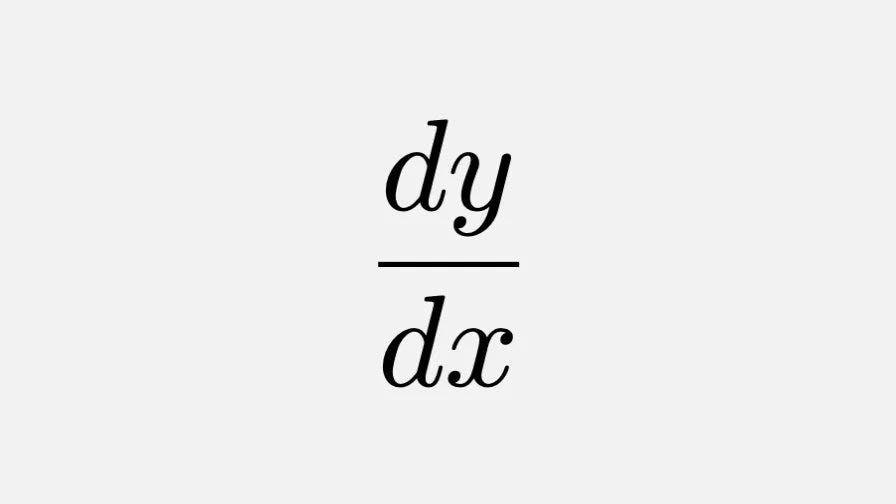
To continue:
Sometimes the origins of structuralism are sought in the area of axiomatics, and it is true that Bourbaki, for example, uses the word “structure.” But this use, it seems to me, is in a very different sense, that of relations between non-specified elements, not even qualitatively specified, whereas in structuralism, elements specify each other reciprocally in relations. In this sense, axiomatics would still be imaginary, not symbolic properly speaking.
Deleuze clarifies that the field of axiomatics — particularly developed by Nicolas Bourbaki, the collective pseudonym for a group of French mathematics — is not to be confused with structuralism. Although the term “structure” appears in Bourbaki’s work, it signifies something different than what Deleuze’s analysis of structuralism. He explains:
The mathematical origin of structuralism must be sought rather in the domain of differential calculus, specifically in the interpretation which Weierstrass and Russell gave to it, a static and ordinal interpretation, which definitively liberates calculus from all reference to the infinitely small, and integrates it into a pure logic of relations.
The mathematical origin of structuralism, Deleuze argues must be located in the domain of differential calculus — not in axiomatics. He points to the work of German mathematician Karl Weierstrass and the British logician Bertrand Russell, whose interpretation of calculus departs from references to the infinitesimal and instead integrates it into a “pure logic of relations.”
Deleuze continues:
Corresponding to the determination of differential relations are singularities, distributions of singular points which characterize curves or figures (a triangle for example has three singular points).
When we examine “the determination of differential relations,” we find elements being defined only through their relation to other elements. What corresponds to this process are singularities — points that stand out and give shape to a structure. Singularities emerge from the “distribution of singular points,” that characterize a figure. For example, a triangle is composed of three points, each of which is a singularity. In calculus, when dealing with curves, inflection points function similarly as they are singularities. Furthermore:
In this way, the determination of phonemic relations proper to a given language ascribes singularities in proximity to which the vocalizations and significations of the language are constituted.
Deleuze discusses language in terms of “phonemic relations,” where meaning is produced through phonemes — irreducible units of speech that are defined only in relation to one another. These phonemic elements do not possess intrinsic meaning on their own but acquire significance through their differential relations. However, in the context of singularities, we are examining the distribution of points that characterize how language is manifested. From my understanding, these singularities refer to inflection, tone, etc. Singularities are not the phonemes themselves but the terms by which phonemes are characterized by.
Deleuze continues by reiterating the main point of this third criterion:
The reciprocal determination of symbolic elements continues henceforth into the complete determination of singular points that constitute a space corresponding to these elements.
Symbolic elements are defined in reciprocal relation to one another, and corresponding to these elements is a distribution of singular points. These singularities are mapped out in a space that give shape to a structure. Deleuze writes:
The crucial notion of singularity, taken literally, seems to belong to all the domains in which there is structure. The general formula, “to think is to cast a throw of the dice,” itself refers to the singularities represented by the sharply outlined points on the dice.
When we examine singularities in a literal sense, we find concrete points that define any domain with structure. The reference to the throw of the dice comes from French poet Stéphane Mallarmé. For Deleuze, thinking is like casting dice: while the throw is open to chance, its result is structured by the arrangement of the dots — the singular points — that determine the outcome.
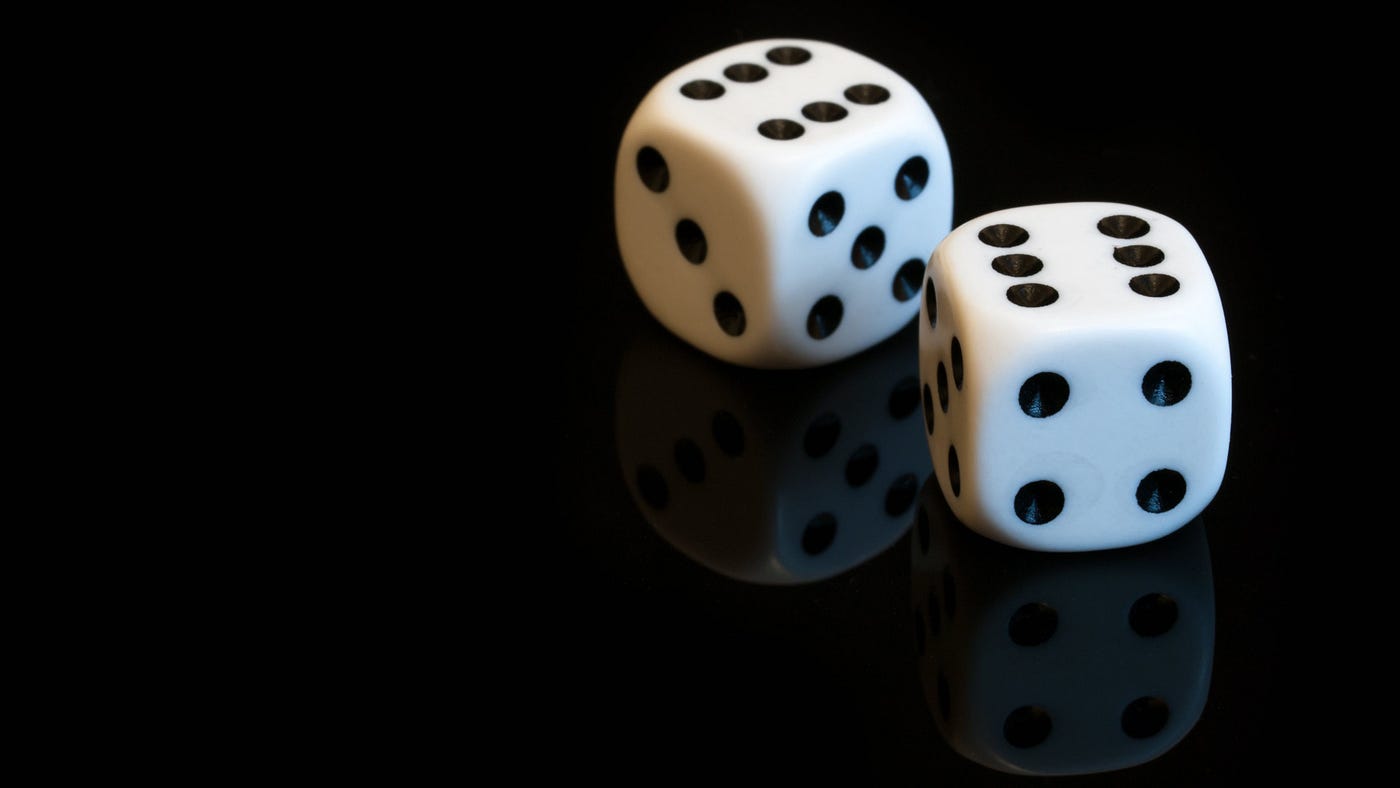
Deleuze defines what structures are composed of:
Every structure presents the following two aspects: a system of differential relations according to which the symbolic elements determine themselves reciprocally, and a system of singularities corresponding to these relations and tracing the space of the structure.
Every structure is a multiplicity.
The question, “Is there structure in any domain whatsoever?,” must be specified in the following way: in a given domain, can one uncover symbolic elements, differential relations and singular points which are proper to it?
The first aspect of a structure is a “system of differential relations,” where elements are defined in relation to one another. The second aspect is a “system of singularities,” which trace the space of the structure itself. On this basis, Deleuze argues that “every structure is a multiplicity.” Though Deleuze continues to identify structuralism as the discipline of uncovering symbolic elements within a given domain, what is particularly interesting is Deleuze’s comment on symbolic elements:
Symbolic elements are incarnated in the real beings and objects of the domain considered; the differential relations are actualized in real relations between these beings; the singularities are so many places in the structure, which distributes the imaginary attitudes or roles of the beings or objects that come to occupy them.
Deleuze emphasizes that these symbolic elements are incarnated in real beings and objects. That is to say, these abstract elements to not exist as mere fantasies; they are materially embodied in the world. The differential relations — the ways in which elements are defined in relation to one another — are actualized in interactions between real beings. The singularities are also incarnated as real points within a structure as they are distributed as different positions. When a subject occupies a specific position, they then take on an imaginary attitude; this implies that a subject is not pre-determined by themselves, but they are determined by the position they occupy.
Deleuze continues:
It is not a matter of mathematical metaphors. In each domain, one must find elements, relationships and points
He moves beyond mathematics and discusses the field of anthropology with Levi-Strauss’ work, specifically within kinship structures:
When Levi-Strauss undertakes the study of elementary kinship structures, he not only considers the real fathers in a society, nor only the father-images that run through the myths of that society. He claims to discover real kinship phonemes, that is, kin-emes [parentemes], positional units which do not exist independently of the differential relations into which they enter and that determine each other reciprocally. It is in this way that the four relations — brother / sister, husband / wife, father / son, maternal uncle / sister’s son — form the simplest structure.
Similar to the math metaphors defining the relations between numbers, we find “kinship phonemes” in anthropology where familial relations such as brother/sister and husband/wife serve as simple structures — and these terms can only be understood in relation to one another (i.e., the role of the brother exists because it contrasts with sister). Deleuze continues:
And to this combinatory system of “kinship names” correspond in a complex way, but without resembling them, the “kinship attitudes” that realize the singularities determined in the system.
The “kinship names” refer to structural positions (such as brother, sister, etc.), while the “kinship attitudes” describes the roles that subjects embody when occupying these positions. Deleuze makes a subtle but important point here: singularities are only realized through their actualization via attitudes — often mediated by the imaginary. To put simply, a singularity can only be understood when it is actualized.
As our anthropological examination began with symbolic elements, Deleuze notes another approach:
One could just as well proceed in the opposite manner: start from singularities in order to determine the differential relations between ultimate symbolic elements.
Levi-Strauss uses this approach when analyzing the myth of Oedipus:
Thus, taking the example of the Oedipus myth, Levi-Strauss starts from the singularities of the story (Oedipus marries his mother, kills his father, immolates the Sphinx, is named club-foot, etc.) in order to infer from them the differential relations between “mythemes” which are determined reciprocally (overestimation of kinship relations, underestimation of kinship relations, negation of aboriginality, persistence of aboriginality).
The singularities of the Oedipus myth — such as Oedipus marrying his mother and killing his father — can be a starting point that leads one to conceptualize the symbolic elements of the domain. Levi-Strauss utilizes this strategy and calls the elements “mythemes,” or relations that define kinship and aboriginality. Deleuze states:
In any case, the symbolic elements and their rela- tions always determine the nature of the beings and objects which come to realize them, while the singularities form an order of positions that simultaneously determines the roles and the attitudes of these beings in so far as they occupy them.
The determination of the structure is therefore completed in a theory of attitudes which explains its functioning.
Once again, Deleuze highlights the importance of attitudes or the realization of positions that allow one to understand the singularities of a system. However, singularities are not symbolic elements:
Singularities correspond with the symbolic elements and their relations, but do not resemble them. One could say, rather, that singularities “symbolize” with them, derive from them, since every determination of differential relations entails a distribution of singular points.
Singularities correspond to symbolic elements, yet function as distinct points that contribute to shaping a structure. Deleuze gives an example to emphasize this point:
Yet, for example: the values of differential relations are incarnated in species, whereas singularities are incarnated in the organic parts corresponding to each species.
The example here distinguishes between the level of species and their parts. When examining symbolic elements through their differential relations, we see these relations manifest in species as a whole. In contrast — while corresponding to these symbolic relations — singularities refer to the localized points in these species, such as the parts that differentiate one species from another. Deleuze writes:
The former constitute variables, the latter constitute functions.
The former constitute within a structure the domain of appellations, the latter the domain of attitudes.”
Levi-Strauss insisted on this double aspect — derived, yet irreducible — of attitudes in relation to appellations.
A disciple of Lacan, Serge Leclaire, shows in another field how the symbolic elements of the unconscious necessarily refer to “libidinal movements” of the body, incarnating the singularities of the structure in such and such a place.
In this sense, every structure is psychosomatic, or rather represents a category-attitude complex.
Though variables and functions are found within every discipline — with psychoanalysis being a focus here — I find this to be easily understood in the area of mathematics. Deleuze continues by discussing Marxism:
Let us consider the interpretation of Marxism by Althusser and his collaborators: above all, the relations of production are determined as differential relations that are established, not between real men or concrete individuals, but between objects and agents which, first of all, have a symbolic value (object of production, instrument of production, labor force, immediate workers, immediate non-workers, such as they are held in relations of property and appropriation).
Unlike other interpretations of Marxism, Deleuze finds Althusser as analyzing the production process through the framework of structural positions. Roles such as “capitalist” or “worker” are not tied to concrete individuals but are defined as relational functions within a broader structure. Each position only gains meaning in relation to others — for there to be a capitalist, there must be a worker, and vice versa. Singularities correspond to this structural process:
Each mode of production is thus characterized by singularities corresponding to the values of the relations.
And if it is obvious that concrete men come to occupy the places and carry forth the elements of the structure, this happens by fulfilling the role that the structural place assigns to them (for example the “capitalist”), and by serving as supports for the structural relations.
This occurs to such an extent that “the true subjects are not these occupants and functionaries… but the definition and distribution of these places and these functions.”
The true subject is the structure itself: the differential and the singular, the differential relations and the singular points, the reciprocal determination and the complete determination.
Since singularities instantiate the structure, it is important to understand that property relations must be understood through the distribution of points. Therefore, singularities are not the positions within the structure, but the concrete points that map out and define the structure. For instance, the extraction of surplus value, the division of labor, and so on, are examples of singularities that characterize capitalism.

IV. Fourth Criterion: The Differenciator, Differentiation
Deluze begins this explanation of the fourth criterion by stating:
Structures are necessarily unconscious, by virtue of the elements, relations and points that compose them. Every structure is an infrastructure, a micro-structure. In a certain way, they are not actual.
Structures serve as the basis for what gives form to things. They are not consciously known but function as the unconscious foundation of how we know. However, structures do become actualized in specific ways:
What is actual is that in which the structure is incarnated or rather what the structure constitutes when it is incarnated. But in itself, it is neither actual nor fictional, neither real, nor possible. Jakobson poses the problem of the status of the phoneme, which is not to be confused with any actual letter, syllable or sound, no more than it is a fiction, or an associated image
Thus, structures only become concrete when they take on a specific form. They are actualized through their expression in the world. Deleuze writes:
Perhaps the word virtuality would precisely designate the mode of the structure or the object of theory, on the condition that we eliminate any vagueness about the word.
When Deleuze speaks of virtuality, he is referring to a kind of field or plane of potentiality that is not yet actualized. This means that a structure exists regardless of its actualization:
For the virtual has a reality which is proper to it, but which does not merge with any actual reality, any present or past actuality. The virtual has an ideality that is proper to it, but which does not merge with any possible image, any abstract idea.
Structures are real in themselves, regardless of whether they are ever actualized. Their reality is not reducible to past events (has happened) or future possibility (will happen). Deleuze states:
We will say of structure: real without being actual, ideal without being abstract.
This is why Levi-Strauss often presents the structure as a sort of ideal reservoir or repertoire, in which everything coexists virtually, but where the actualization is necessarily carried out according to exclusive rules, always implicating partial combinations and unconscious choices.
To discern the structure of a domain is to determine an entire virtuality of coexistence which pre-exists the beings, objects and works of this domain. Every structure is a multiplicity of virtual coexistence.
To reiterate: structures are real even though they may not appear in concrete form. Similarly, structures are ideal in how they are virtually structured, but they are not abstract, as abstraction would imply a divorce from realness. Deleuze uses an example from Althusser to depict this point:
Louis Althusser, for example, shows in this sense that the originality of Marx (his anti-Hegelianism) resides in the manner in which the social system is defined by a coexistence of elements and economic relations, without one being able to engender them successively according to the illusion of a false dialectic.
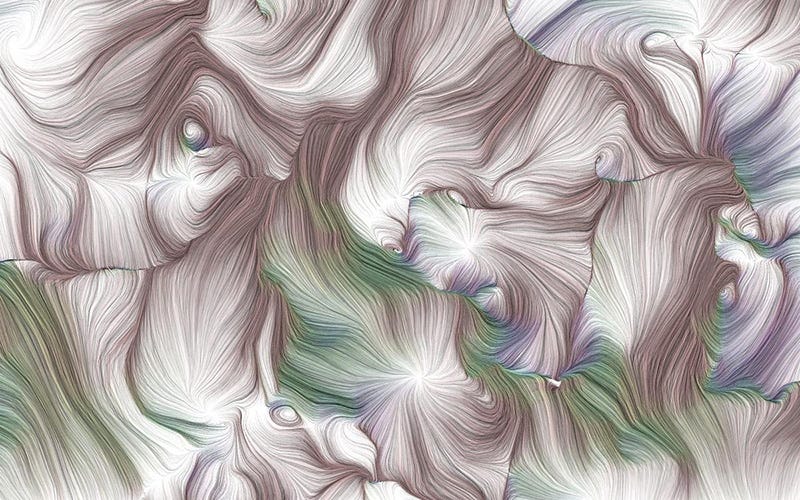
Deleuze writes:
What is it that coexists in the structure?
All the elements, the relations and relational values, all the singularities proper to the domain considered.
As stated earlier, symbolic elements (and all of their relations), along with singularities distributed and mapped out, coexist to serve as the structure. Deleuze continues:
Such a coexistence does not imply any confusion, nor any indetermination for the relationships and differential elements coexist in a completely and perfectly determined whole.
Except that this whole is not actualized as such.
What is actualized, here and now, are particular relations, relational values, and distributions of singularities; others are actualized elsewhere or at other times.
The coexistence of symbolic elements, their relations, and singularities does not imply disorder or confusion. Nor is it vague or indeterminate — the structure is fully and precisely determined. The elements and singularities exist together as a whole, though it does not require actualization of this whole. However, in a given time and place, the structure is definitively actualized. The structure may not be present all at once but this does not imply its existence as a whole. He gives an example pertaining to language:
There is no total language [langue], embodying all the possible phonemes and phonemic relations.
But the virtual totality of the language system [langage] is actualized following exclusive rules in diverse, specific languages, of which each embodies certain relationships, relational values, and singularities.
No single language — whether English, Spanish, Arabic, Chinese, and so on — contains every possible phoneme or phonemic relation. This does not entail that a total, all-encompassing language exists elsewhere nor does it imply that absence of a structure. Rather, different parts of the virtual structure of language are actualized in specific manners across individual languages. For instance, certain phonemic relations appear in Chinese that are absent in English.
Deleuze gives another example:
There is no total society, but each social form embodies certain elements, relationships, and production values (for example “capitalism”).
Akin to language, there is no single society that fully actualizes the virtual structure of society. Instead, we encounter distinct social forms — such as primitive, despotic, or capitalist societies. This does not indicate the absence of a virtual social structure, but rather that each form embodies different aspects of its actualization.

To continue:
We must therefore distinguish between the total structure of a domain as an ensemble of virtual coexistence, and the sub-structures that correspond to diverse actualizations in the domain.
Deleuze highlights the need to distinguish between the entire virtual structure and the sub-structures that actualize parts of it. The partial actualizations of this structure — such as specific languages or social forms — must not be mistaken for the entirety of the virtual structure itself. Deleuze writes:
Of the structure as virtuality, we must say that it is still undifferentiated (c), even though it is totally and completely differential (t).
When we examine a virtual structure, it is undifferentiated, meaning that it has not yet been actualized or taken concrete form. However, this structure is differential, meaning that elements can only define themselves in relation to their position within a structure. The specific entities that occupy particular positions or functions are less important than the fact that the structure consists of distinct positions and functions. Furthermore:
Of structures which are embodied in a particular actual form (present or past), we must say that they are differentiated, and that for them to be actualized is precisely to be differentiated.
Specific structures have been realized, whether in the present or past, with particular languages and social forms emerging and disappearing. These embodied structures can be called differentiated, as they take on distinct forms and are made of differentiated elements (such as phonemes in language, for example). He explains:
The structure is inseparable from this double aspect, or from this complex that one can designate under the name of differential (t) / differentiation (c), where t / c constitutes the universally determined phonemic relationship
The virtual structure can only be understood from this “double aspect”: the differential and the differentiation. The differential refers to the symbolic elements that compose a structure, while differentiation refers to the actualization of that structure.
Deleuze continues by discussing differentiation and the differential:
All differentiation, all actualization is carried out along two paths: species and parts.
The differential relations are incarnated in qualitatively distinct species, while the corresponding singularities are incarnated in the parts and extended figures which characterize each species: hence, the language species, and the parts of each one in the vicinity of the singularities of the linguistic structure; the specifically defined social modes of production and the organized parts corresponding to each one of these modes, etc.
When we examine differentiation, we find it is “carried out along two paths.” First, there is species, which refers to broad categories or structures. Second, there are parts, which are the individual components that make up these species. In terms of differential relations, these are actualized through distinct species, with the singularities tied to the parts of within each species. For instance, Deleuze uses the example of “language species,” where languages like English or Spanish serve as a species which includes different parts, such as specific languages and their phonemes. The same concept applies to social modes of production: capitalism is a species made up of parts.
Deleuze writes:
One will notice that the process of actualization always implies an internal temporality, variable according to what is actualized.
Not only does each type of social production have a global internal temporality, but its organized parts have particular rhythms.
Here, Deleuze brings up the concept of temporality to explain how actualization unfolds. Actualization is not instantaneous — it always takes place over time, and the nature of this temporality depends on what is being actualized. In the case of social production, different social systems have distinct internal temporalities; each unfolds according to its own pace. Moreover, within any given system, the organized parts — such as labor relations within the social form of capitalism — follow their own specific rhythm. For instance, labor relations follow their own rhythm compared to the internal temporality of capitalism.
As regards time, the position of structuralism is thus quite clear: time is always a time of actualization, according to which the elements of virtual coexistence are carried out at diverse rhythms.
Time goes from the virtual to the actual, that is, from structure to its actualizations, and not from one actual form to another.
Time is not solely a sequences of events — it is only understood as a process by which virtual structures become actualized; specifically, this process of actualization is accordance to the specific rhythms of each part.
Or at least time conceived as a relation of succession of two actual forms makes do with expressing abstractly the internal times of the structure or structures that are realized at different depths in these two forms, and the differential relations between these times.
Even if we conceptualize time as a successive of events or forms (primitivism → despotism → capitalism), we still have the ability to understand that different social forms are capable of being actualized. However, the internal times of a structure are realized as “different depths in these two forms” (the species and the parts) take shape. Deleuze writes:
And precisely because the structure is not actualized without being differentiated in space and time, hence without differentiating the species and the parts which carry it out, we must say in this sense that structure produces these species and these parts themselves.
It produces them as differentiated species and parts, such that one can no more oppose the genetic to the structural than time to structure.
Genesis, like time, goes from the virtual to the actual, from the structure to its actualization; the two notions of multiple internal time and static ordinal genesis are in this sense inseparable from the play of structures.
To reiterate: a structure is not actualized unless it is differentiated within space and time. This actualization relates to species and parts which the structure produces. It is impossible to separate structure from genesis in the same manner that it is impossible to separate structure from time; structuralism is not opposed to time, but rather, explain how time occurs through the actualization of structures. Genesis and time move from the the virtual to the actual.

Deleuze continues by detailing a summary of this fourth criterion:
We must insist on this differenciating role. Structure is in itself a system of elements and of differential relations, but it also differentiates the species and parts, the beings and functions in which the structure is actualized. It is differential in itself, and differentiating in its effect.
He continues by emphasizing a quote from French philosopher Jean Pouillon:
Commenting on Levi-Strauss’s work, Jean Pouillon defined the problem of structuralism: can one elaborate “a system of differences which leads neither to their simple juxtaposition, nor to their artificial erasure?”
Thus, the problem structuralism seeks to address is how to construct a system in which differences are maintained, without being flattened through assimilation or rended indistinguishable through juxtaposition. Levi-Strauss’ anthropological work, as argued by Deleuze, is structuralist by nature, but so are other disciplines:
In this regard, the work of Georges Dumezil is exemplary, even from the point of view of structuralism: no one has better analyzed the generic and specific differences between religions, and also the differences in parts and functions between the gods of a particular, single religion.
For the gods of a religion, for example, Jupiter, Mars, Quirinus, incarnate elements and differential relations, at the same time as they find their attitudes and functions in proximity to the singularities of the system or “parts of the society” considered.
French religious studies scholar Georges Dumézil is often praised by Deleuze, who also emphasizes that Dumézil holds significant importance within the framework of structuralism:
[The gods of a religion] are thus essentially differentiated by the structure which is actualized or carried out in them, and which produces them by being actualized.
It is true that each of them, considered solely in its actuality, attracts and reflects the function of the others, such that one risks no longer discovering anything of this originary differenciation which produces them from the virtual to the actual.
Without going into too much detail, all Deleuze is arguing is that Dumézil’s analysis of various gods of religion are differentiated via a structure that actualizes them. He writes:
But it is precisely here that the border passes between the imaginary and the symbolic: the imaginary tends to reflect and to resituate around each term the total effect of a wholistic mechanism, whereas the symbolic structure assures the differential of terms and the differentiation of effects.
This is a clear reference to Lacanian psychoanalysis as Deleuze is isolating the imaginary and the symbolic registers. The Imaginary is concerned with unified images whereas the symbolic is concerned with difference as elements are only given meaning in relation to one another. On this point, Deleuze notes:
Hence the hostility of structuralism toward the methods of the imaginary: Lacan’s critique of Jung, and the critique of Bachelard by proponents of “New Criticism.”
He finds structuralism to be hostile toward the “methods of the imaginary.” Deleuze mentions Lacan’s criticisms of Jung — particular Jung’s focus on the imaginary via archetypal figures — along with criticisms of Bachleard. Furthermore:
The imagination duplicates and reflects, it projects and identifies, loses itself in a play of mirrors, but the distinctions that it makes, like the assimilations that it carries out, are surface effects that hide the otherwise subtle differential mechanisms of symbolic thought.
The imagination works through duplications, reflection, and projection, meaning that it imposes an image upon something which causes it to lose itself in the process; it “loses itself in a play of mirrors” as it is akin to looking in a mirror and assuming the reflection is the real thing. Even if the imagination appears to make distinctions, it is only surface-level. Beneath this is “subtle differential mechanisms of symbolic thought.” Deleuze states:
Commenting on Dumezil, Edmond Ortigues has this to say: “When one approaches the material imagination, the differential function diminishes, one tends towards equivalences; when one approaches the formative elements of society, the differential function increases, one tends towards distinctive values [valences].”
The term “material imagination” refers to how religion and storytelling utilize images to convey a message. However, within this domain, “the differential function diminishes,” which means that distinctions between elements become blurred and deemed equivalent — images serve as substitutions that can be applied universally upon any element. For example, gods and goddesses in mythology frequently rules over many different domains, showing how the imagination tends to merge roles and meanings. In contrast, when we analyze social structures, differences are much sharper as there needs to be strict boundaries between king, queen, peasant, and so on.
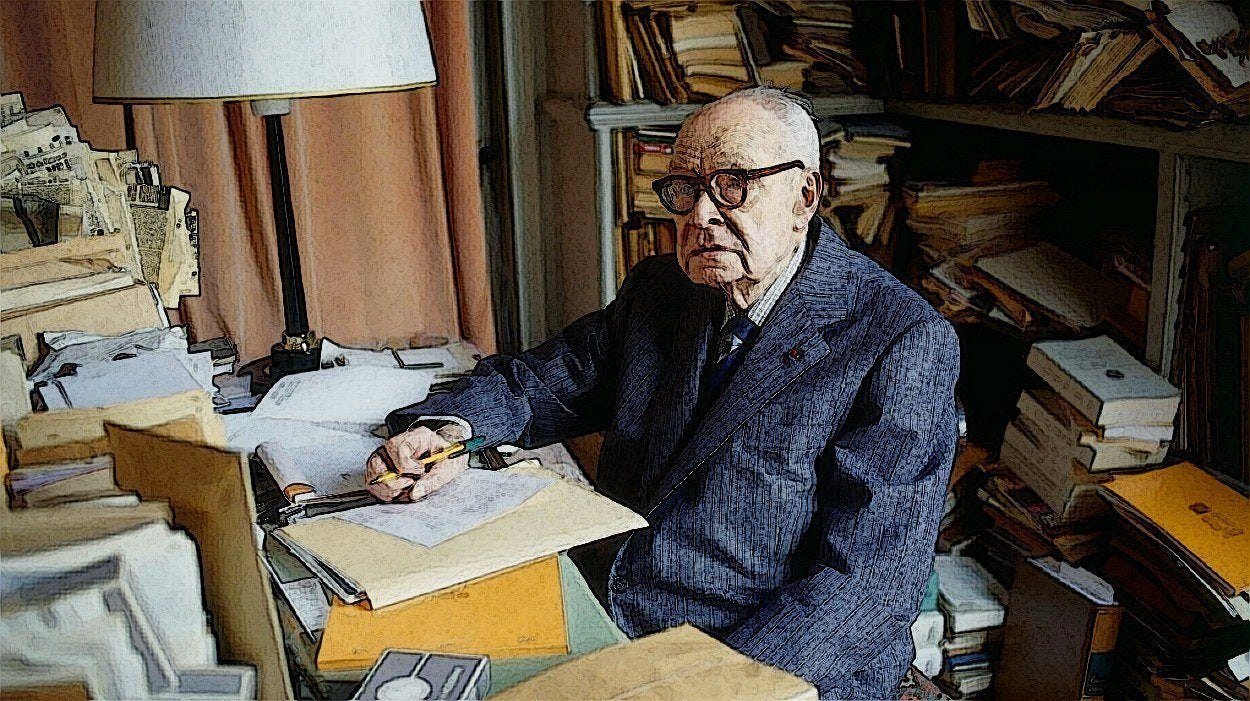
Deleuze continues:
Structures are unconscious, necessarily overlaid by their products or effects.
An economic structure never exists in a pure form, but is covered over by the juridical, political and ideological relations in which it is incarnated.
One can only read, find, retrieve the structures through these effects.
The terms and relations which actualize them, the species and parts that realize them, are as much forms of interference [brouillage] as forms of expression.
Structures themselves are not experienced consciously. Rather, what is experienced is the effects of structures. Deleuze gives the example of an economic structure never existing in “pure form” but as something covered up by various effects. Further still:
This is why one of Lacan’s disciples, J.-A. Miller, develops the concept of a “metonymic causality,” or Althusser, the concept of a properly structural causality, in order to account for the very particular presence of a structure in its effects, and for the way in which it differenciates these effects, at the same time as these latter assimilate and integrate it.
Now, if it is true that structures become actualized, the question becomes how something not concrete can become concrete. Deleuze utilizes Miller “metonymic causality” and Althusser’s structural causality to properly conceptualize how structures become actualized. The structure itself does not cause effects in the sense that it is actively causing actualization. Instead, the structure organizes positions and functions. Even though the structure appears absent, it is already readily present in the way that effects are organized along with how these effects are differentiated. An interesting point that Deleuze makes it that these differentiated affects “assimilate and integrate” the structure, meaning that these effects embody the structure.
To continue:
The unconscious of the structure is a differential unconscious.
One might believe then that structuralism goes back to a pre-Freudian conception: doesn’t Freud understand the unconscious as a mode of the conflict of forces or of the opposition of desires, whereas Leibnizian metaphysics already proposed the idea of a differential unconscious of little perceptions?
But even in Freud’s writing, there is a whole problem of the origin of the unconscious, of its constitution as “language,” which goes beyond the level of desire, of associated images and relations of opposition.
In structuralist thought, the unconscious is understood as differential — composed not of repressed content, but of positions, functions, and relations within a system of differences. Deleuze posits that it is possible for structuralism to have taken root much further back than Freud, notably in the work of Gottfried Leibniz. Leibniz’s theory of the monad and his concept of “little perceptions” is emblematic of a structuralist view of the unconscious. Freud did not clearly separate between the imaginary and the symbolic, and understood the unconscious as a site of opposing desires. However, Deleuze notes that we should not dismiss Freud entirely — some of Freud’s work does suggest a kind of proto-structuralist approach to the unconscious. Deleuze writes:
Conversely, the differential unconscious is not constituted by little perceptions of the real and by passages to the limit, but rather of variations of differential relations in a symbolic system as functions of distributions of singularities.
Though he isolated Leibniz as potentially being closer to what he calls structuralism, Deleuze still finds Leibniz’s monads to not fully equate to the differential unconscious. The differential unconscious does not accumulate these “little perceptions.” Instead, it is solely understood as difference within a symbolic system. He continues:
Levi-Strauss is right to say that the unconscious is made neither of desires nor of representations, that it is “always empty,” consisting solely in the structural laws that it imposes on representations and on desires.
Once again, Deleuze draws from Levi-Strauss and argues that the unconscious is not composed of various desires nor of images or representations. The unconscious relates to form — not content — thus making it empty. It is only actualized when elements enter into specific positions and functions within this structure.
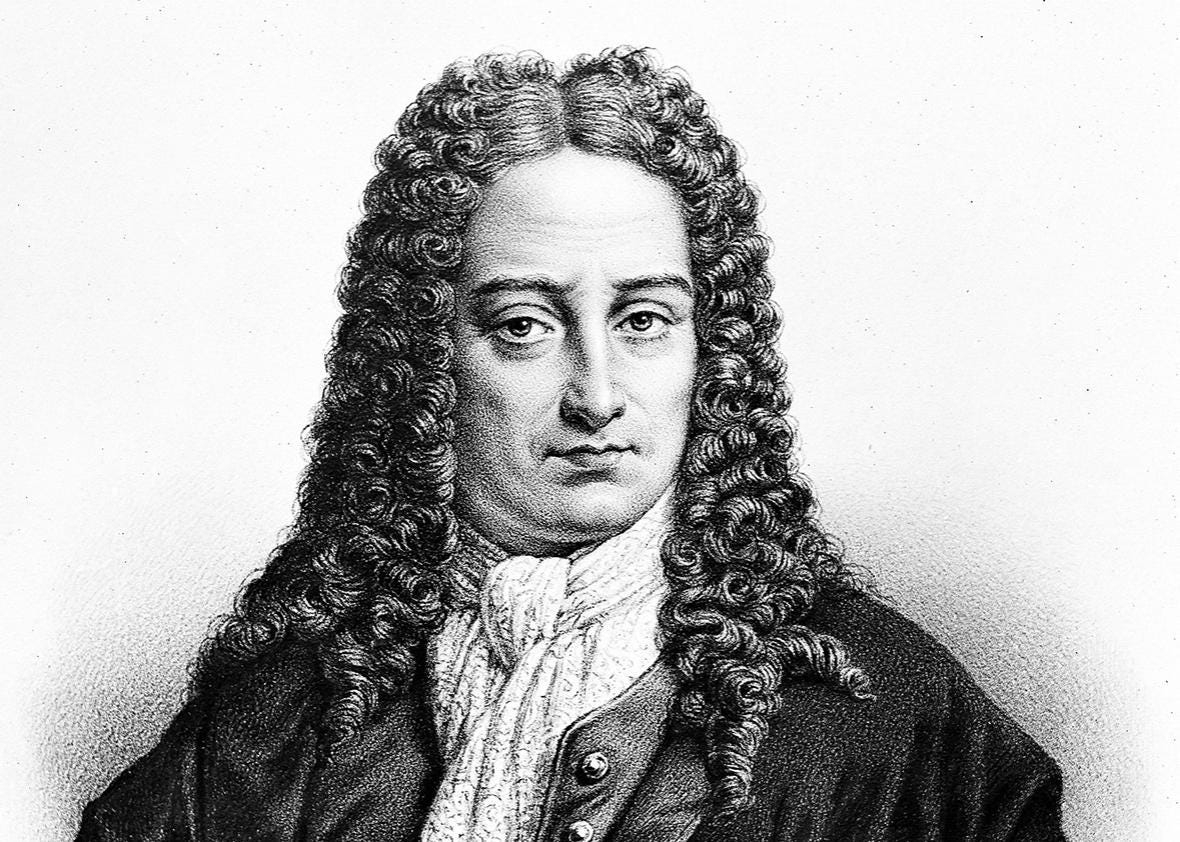
Deleuze writes:
For the unconscious is always a problem, though not in the sense that would call its existence into question.
Rather, the unconscious by itself forms the problems and questions that are resolved only to the extent that the corresponding structure is instantiated [s’effectue] and always according to the way that it is instantiated.
For a problem always gains the solution that it deserves based on the manner in which it is posed, and on the symbolic field used to pose it.
The unconscious is always a problem — but not in the sense that its existence is in doubt. Rather, the unconscious produces problems that are themselves structured symbolically and invite interpretation. However, these problems can only be resolved when a symbolic structure is actualized. The form that any solution takes depends entirely on how the problem was posed within that structure. Deleuze writes:
Althusser can present the economic structure of a society as the field of problems that the society poses for itself, that it is determined to pose for itself, and that it resolves according to its own means, that is, according to the lines of differentiation along which the structure is actualized (taking into account the absurdities, ignominies and cruelties that these “solutions” involve by reason of the structure).
Althusser views the economic structure of society as a “field of problems” that the society must confont or solve. These problems are not arbitrary; they are integral to the structure at hand. And, society must attempt to resolve these problems using the tools already embedded within that structure. For instance, the contradictions inherent to capitalism are not accidental — they are fundamental to its structure.
Similarly, Serge Leclaire, following Lacan, can distinguish psychoses and neuroses, and different kinds of neuroses, less by types of conflict than by modes of questions that always find the answer that they deserve as a function of the symbolic field in which they are posed: thus the hysterical question is not that of the obsessive.”
French psychoanalyst Serge Leclaire, who succeeds Lacan, analyzes how the different types of psychoses and neuroses (ranging from general disorders to psychosis and hysteria) are solely a question of the symbolic structure. Furthermore:
In all of this, problems and questions do not designate a provisional and subjective moment in the elaboration of our knowledge, but on the contrary, designate a perfectly objective category, full and complete “objectalities” [objectites] which are the structure’s own.
Once again, the problems designated to particular structures are not subjective. It is solely a question of the structure itself and the problems it produces. Finally, Deleuze writes:
The structural unconscious is at once differential, problematizing and questioning.
And, as we shall see, it is finally serial.
Deleuze concludes the fourth criterion by introducing the fifth criterion.
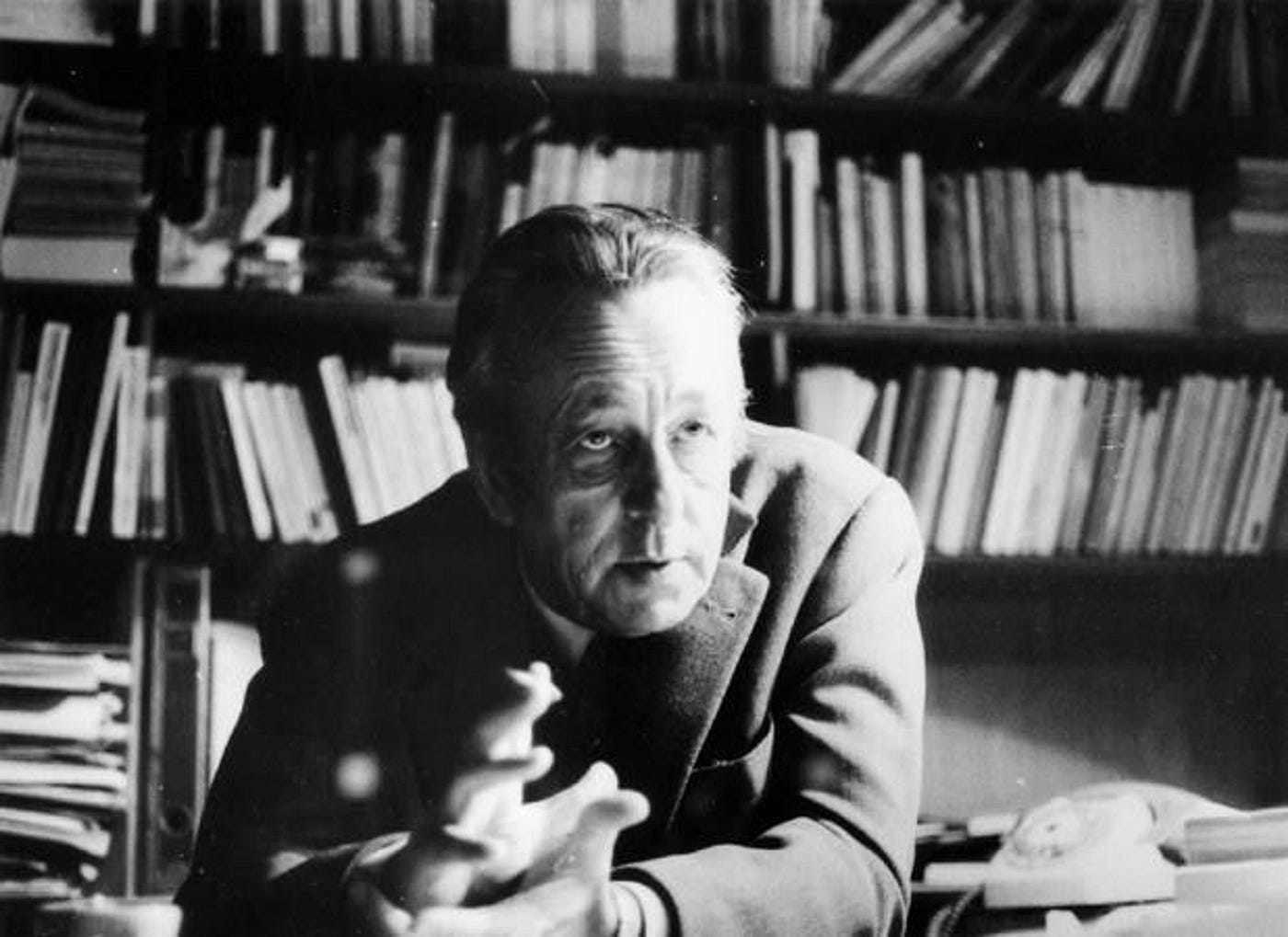
V. Fifth Criterion: Serial
Deleuze begins to explain the fifth criterion by saying:
All of the preceding, however, still seems incapable of functioning, for we have only been able to define half of the structure.
A structure only starts to move, and become animated, if we restore its other half.
Indeed, the symbolic elements that we have previously defined, taken in their differential relations, are organized necessarily in series.
After outlining the first four criteria, Deleuze observes that only one side of the structure has been accounted for — its static aspects: positions, roles, singularities, and so forth. Now, he turns to how the structure becomes animated, introducing the idea of differential relations being arranged into series. He writes:
But so organized, they relate to another series, constituted by other symbolic elements and other relations: this reference to a second series is easily explained by recalling that singularities derive from the terms and relations of the first, but are not limited simply to reproducing or reflecting them.
They thus organize themselves in another series capable of an autonomous development, or at least they necessarily relate the first to this other series.
Once symbolic elements are arranged within a particular structure or sequence, they begin to organize into another series as singularities detach from their original configuration. Deleuze is not suggesting that there are only two series, but uses the example of two in order to illustrate how symbolic elements can reorganize into different sequences. For example:
So it is for phonemes and morphemes; or for the economic and other social series; or for Foucault’s triple series, linguistic, economic and biological, etc.
In all kinds of disciplines, it is evident that these two series are present. At any rate:
The question of knowing if the first series forms a basis and in which sense, if it is signifying, the others only being signified, is a complex question the nature of which we cannot yet assess. One must state simply that every structure is serial, multi-serial, and would not function without this condition.
Deleuze notes that it is tempting to try and determine which series is more important than another (i.e., a hierarchy between signifying and signified). This question, as of now, is irrelevant. Hierarchies aside, what is known is that every structure is serial. It operationalizes through multiple series. To explain this point, Deleuze uses an example from Levi-Strauss:
When Levi-Strauss again takes up the study of totemism, he shows the extent to which the phenomenon is poorly understood as long as it is interpreted in terms of imagination.
For according to its law, the imagination necessarily conceives totemism as the operation by which a man or a group are identified with an animal. But symbolically, it is quite a different matter, not the imaginary identification of one term with another, but the structural homology of two series of terms: on the one hand, a series of animal species taken as elements of differential relations; on the other, a series of social positions themselves caught symbolically in their own relations.
This confrontation occurs “between these two systems of differences,” these two series of elements and relations.”
Levi-Strauss took up the study of totemism — a belief system where an individual or group has a specific relationship with a kind of animal, plant or object — and departed from the normative view of this belief. Previously, totemism was interpreted via imaginary identifications (i.e., a group might be perceived as being like a bear). The reality is that we are dealing with a structural homology — or a relation between different structures. The first term is concerned with animal species (bears, cats, dogs, etc.) with symbolic elements from this term being defined in relation to one another. The second term is concerned with social groups such as specific roles in society. Totemism, for Levi-Strauss, is not about imaginary identifications but the symbolic differences between these two series.

To continue:
The unconscious, according to Lacan, is neither individual nor collective, but intersubjective, which is to say that it implies a development in terms of series: not only the signifier and the signified, but the two series at a minimum organize themselves in quite a variable manner according to the domain under consideration.
Whereas Freud emphasizes the unconscious as individual and Jung conceives it as a mythic collective repository, Lacan understands the unconscious as fundamentally intersubjective. This intersubjective nature requires a development that pertains to two series (which is not only the signifier and signified). Deleuze gives an example of this:
In one of Lacan’s most famous texts, he comments on “The Purloined Letter” by Edgar Allen Poe, showing how the “structure” puts into play two series, the places of which are occupied by variable subjects.
First series: the king who does not see the letter, the queen who is thrilled at having so cleverly hidden it by leaving it out in the open, the minister who sees everything and takes possession of the letter.
Second series: the police who find nothing at the minister’s hotel; the minister who is thrilled at having so cleverly hidden the letter by leaving it out in the open; Dupin who sees everything and takes back possession of the letter.
In Edgar Allen Poe’s story The Purloined Letter, which Lacan reads through a psychoanalytic lens, there are two series. The first series deals with the queen hiding a letter from the king, with the minister noticing this concealment and stealing the letter from the queen. The second series is concerned with the minister having hid the letter and Dupin finding the letter and stealing it from minister. Deleuze illustrates this first and second series with another example:
Already in a previous text, Lacan examined the case of The Rat Man on the basis of a double series, paternal and filial, in which each put into play four relational terms according to an order of places: debt / friend, rich woman / poor woman.
In both cases, two series are present — both of which are necessary for the organization and variability of a structure.
Furthermore:
It goes without saying that the organization of the constitutive series of a structure supposes a veritable mise en scene and, in each case, requires precise evaluations and interpretations.
There is no general rule at all; we touch here on the point at which structuralism implies, from one perspective, a true creation, and from another, an initiative and a discovery that is not without its risks.
The constitutive series is organized around two terms, and their structure requires a kind of mise en scène — an arrangement of relations. This arrangement invites interpretation, allowing specific meanings to emerge from how the series are constructed. However, there is no universal rules for how these series should be organized; each instance requires a creative approach. Yet, all interpretations carry risks as they may oversimplify the complexity of the structure.
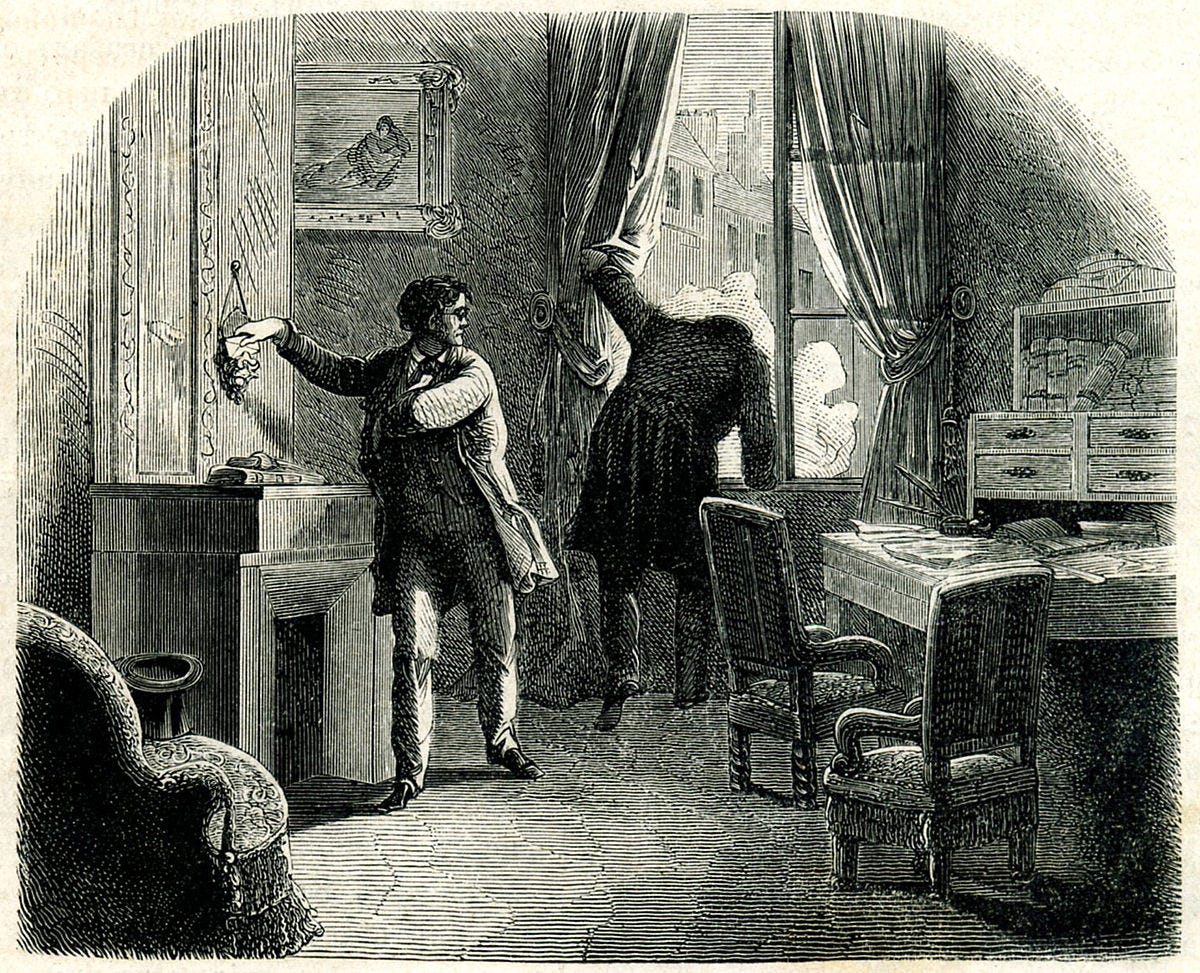
Deleuze sums up this progression:
The determination of a structure occurs not only through a choice of basic symbolic elements and the differential relations into which they enter, nor merely through a distribution of the singular points which correspond to them.
The determination also occurs through the constitution of a second series, at least, that maintains complex relations with the first.
And if the structure defines a problematic field, a field of problems, it is in the sense that the nature of the problem reveals its proper objectivity in this serial constitution, which sometimes makes structuralism seem close to music.
The first four criterions detailed how a structure is composed of symbolic elements that are differentially related along with singularities that are mapped out to define the contours of a structure. However, this does not take into account the entitreity of a structure — there is a second series that “maintains complex relations with the first.” This second series, along with its relation to the first, allow for variability as the structure has the capacity to define a “problematic field.” The structure does not resolve problems, but produces them by series interacting with one another. Deleuze writes:
Phillipe Sollers writes a novel, Drame, punctuated [rhythme] by the expressions “Problem” and “Missing” [Manque], in the course of which tentative series are elaborated (“a chain of maritime memories passes through his right arm… the left leg, on the other contrary, seemed to be riddled with mineral groupings”).’
Or Jean-Pierre Faye’s attempt in Analogues, concerning a serial co-existence of narrative modes.’
In the typical Deleuzian manner, Deleuze gives other examples of this double-series. At any rate, he writes:
But what keeps the two series from simply reflecting one another, and henceforth, identifying each of their terms one to one? The whole of the structure would then fall back into the state of a figure of imagination.
Deleuze questions what prevents the two series from being a reflection of one another. If both series were a reflection of one another or identical, it would be in the realm of the imaginary. So, what accounts for the fact that the series do not reflect each other?
The factor that allays such a threat is seemingly quite strange.
Indeed, the terms of each series are in themselves inseparable from the slippages [decalages] or displacements that they undergo in relation to the terms of the other.
They are thus inseparable from the variation of differential relations.
In the case of the purloined letter, the minister in the second series comes to the place that the queen had occupied in the first one.
In the filial series of The Rat Man, the poor woman comes to occupy the friend’s place in relation to the debt.
Or again, in the double series of birds and twins cited by Levi-Strauss, the twins are the “people from on high” in relation to the people from below, necessarily coming to occupy the place of the “birds from below,” not of the birds from on high.
The argument presented is that both series cannot be identical to one another because that would collapse to mere imagination. As the elements in a structure shift positions, they do not remain static but carry with them differences. For example, in the second series, the minister comes to acquire the letter, thus taking the position of the queen. Yet, the minister is not at all identical to the Queen — he just occupies the position she did in the first series. From how I read this, the structure itself is fundamentally variable and the series that compose the structure cannot be mapped via a one-to-one correspondence, but Lacan’s analysis of the structure still requires a one-to-one correspondence because he always defines elements exclusively.
Deleuze continues:
This relative displacement of the two series is not at all secondary; it does not come to affect a term from the outside and secondarily, as if giving it an imaginary disguise.
On the contrary, the displacement is properly structural or symbolic: it belongs essentially to the places in the space of the structure, and thus regulates all the imaginary disguises of beings and objects that come secondarily to occupy these places.
This is why structuralism brings so much attention to bear on metaphor and metonymy.
These are not in any way figures of the imagination, but are, above all, structural factors.
The displacement of elements is not something secondary to the structure or a product of something that effects the structure from the outside. The space of the structure requires a shifting of elements. When Deleuze references structuralism emphasizing metaphor and metonymy, he is isolating the kind of impossibility of a fixed nature of the chain.
They are even the two structural factors, in the sense that they express the two degrees of freedom of displacement, from one series to another and within the same series.
Far from being imaginary, they prevent the series that they animate from confusing or duplicating their terms in imaginary fashion.
But what are these relative displacements then, if they belong absolutely to places in the structure?
The displacement occurs within a series and from one series to another. Once again, this is not imaginary, but intrinsic to the symbolic. Deleuze concludes this fourth criterion by questioning where these displacements exist in the structure.
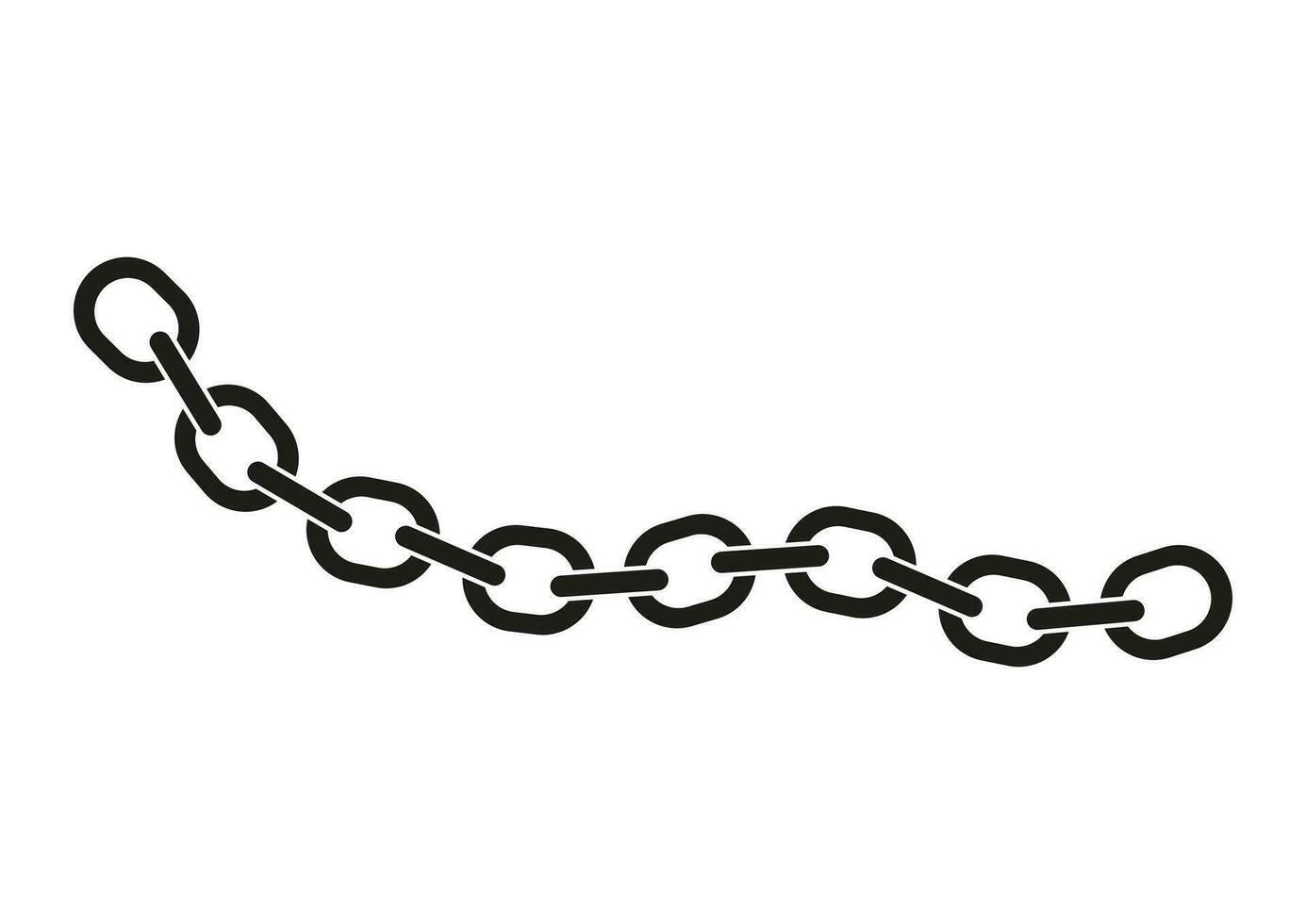
VI. Sixth Criterion: The Empty Square [La Case Vide]
Deleuze begins explaining the sixth criterion by saying:
It appears that the structure envelops a wholly paradoxical object or element.
He gives various examples of what he means by this:
Let us consider the case of the letter, in Edgar Allen Poe’s story, as examined by Lacan; or the case of the debt, in The Rat Man.
It is obvious that this object is eminently symbolic, but we say “eminently” because it belongs to no series in particular: the letter is nevertheless present in both of Poe’s series; the debt is present in both Rat Man series.
Such an object is always present in the corresponding series, it traverses them and moves with them, it never ceases to circulate in them, and from one to the other, with an extraordinary agility.
One might say that it is its own metaphor, and its own metonymy.
I probably should have mentioned this previously but I have only conducted an extensive reading of Lacan’s Seminar on The Purloined Letter, so I will focus on that text rather than the case of The Rat Man. In Poe’s story, the queen’s letter is stolen by the minister, with dupin stealing the letter from the minister. When Deleuze discusses the symbolic object, he is referring to the letter — not as a physical object, but as a structural element that goes through different hands in the story. For Lacan, the letter functions as a pure signifier: it is not defined by its content (it has no signified), but by its role in the shifting of positions within the symbolic chain. The letter’s circulation determines the positions of subjects and the meanings of other signifiers in relation to it.
The series in each case are constituted by symbolic terms and differential relations, but this object seems to be of another nature.
Each series is constituted by specific symbolic terms. In one scene, we have the queen, king, and minister. In another scene, different characters emerge. It is evident that these symbolic terms are differentially related, but the letter is “of another nature.” Furthermore:
In fact, it is in relation to the object that the variety of terms and the variation of differential relations are determined in each case.
The two series of a structure are always divergent (by virtue of the laws of differenciation), but this singular object is the convergence point of the divergent series as such.
It is “eminently” symbolic, but precisely because it is immanent to the two series at once.
What else would we call it, if not Object = x, the riddle Object or the great Mobile element? We can nevertheless remain a bit doubtful: what Jacques Lacan invites us to discover in two cases, the particular role played by a letter or a debt — is it an artifice, strictly applicable to these cases, or rather is it a truly general method, valid for all the structurable domains, a criterion for every structure, as if a structure were not defined without assigning an object = x that ceaselessly traverses the series?
The paradoxical object is determines how terms are arranged within a structure — which also includes the position of this object. Essentially, rather than the system producing this object, this object serves as a way for the structure to form itself in relation to this object. When Deleuze writes “object = x,” he is highlighting the prominence of a placeholder that is never settled.
As if the literary work, for example, or the work of art, but other oeuvres as well, those of society, those of illness, those of life in general, enveloped this very special object which assumes control over their structure.
The notion of this “special object” is not solely specific to how psychoanalysis conceptualizes the unconscious. When we examine novels, art, or even illnesses and life writ large, Deleuze notes that these things are interrelated with “this very special object” that determines the organization of symbolic elements within a structure. Deleuze writes:
And as if it were always a matter of finding who is H, or of discovering an x shrouded within the work. Such is the case with songs: the refrain encompasses an object = x, while the verses form the divergent series through which this object circulates. It is for this reason that songs truly present an elementary structure.
When Deleuze refers to “finding who is H” or “discovering an x,” he is highlighting the structuralist pursuit of identifying the hidden element that is responsible for the organization of elements within a system. In the case of music, this becomes evident with the chorus: though it may be breif or elusive, its repetition anchors the song and allows the verses to unfold and take shape around it.
Deleuze writes:
A disciple of Lacan, Andre Green, signals the existence of the handkerchief that circulates in Othello, traversing all the series of the play. We also spoke of the two series of the Prince of Wales, Falstaff or the father-buffoon, Henry IV or the royal father, the two images of the father. The crown is the object = x that traverses the two series, with different terms and under different relations. The moment when the prince tries on the crown, his father not yet dead, marks the passage from one series to the other, the change in symbolic terms and the variation of differential relations. The old dying king is angered, and believes that his son wants to identify with him prematurely. Yet responding quite capably in a splendid speech, the prince shows that the crown is not the object of an imaginary identification, but on the contrary, is the eminently symbolic term that traverses all the series, the infamous series of Falstaff and the great royal series, and that permits the passage from one to the other at the heart of the same structure.
It would not have made sense to break up these sentences as it pertains to the same concept. Deleuze refers to French psychoanalyst André Green’s analysis of William Shakespeare’s play Othello. Akin to Lacan’s analysis of the letter, Green finds the handkerchief in Othello to be a pure signifier. Deleuze lists a variety of examples here and explains how various stories have this “object = x” that traverses two different series.
As we saw, there was a first difference between the imaginary and the symbolic; the differentiating role of the symbolic, in opposition to the assimilating and reflecting role, doubling and duplicating, of the imaginary.
But the second dividing line appears more clearly here: against the dual character of the imagination, the Third which essentially intervenes in the symbolic system, which distributes series, displaces them relatively, makes them communicate with each other, all the while preventing the one from imaginarily falling back on the other.
The first difference between the imaginary and symbolic was present at the beginning: the symbolic has a differentiating role as elements become defined in relation to each other. The second difference appears in this sixth criterion with the “Third” also known as the pure signifier that displaces elements within series, preventing this structure from collapsing back into the imaginary. If it is not evident by now, the pure signifier is a signifier without a signified. Deleuze writes:
Debt, the letter, the handkerchief or the crown, the nature of this object is specified by Lacan: it is always displaced in relation to itself.
Its peculiar property is not to be where one looks for it, and conversely, also to be found where it is not.
One would say that it “is missing from its place” [il manque a sa place] (and, in this, is not something real); furthermore, that it does not coincide with its own resemblance (and, in this, is not an image); and that it does not coincide with its own identity (and, in this, is not a concept).
The pure signifier is “displaced in relation to itself” which means that its meaning is always deferred. There is no signified to this signifier as it has effects regardless of its content. In the final sentence here, Deleuze notes three aspects of the pure signifier — it is not real in the sense that it can be found in a place, it is not an image, and it is not a concept. Deleuze cites Lacan’s Seminar on The Purloined Letter:
“What is hidden is never what is missing from its place, as the call slip puts it when speaking of a volume lost in the library. And even if the book be on an adjacent shelf or in the next slot, it would be hidden there, however visible it may appear. For only something that can change its place can literally be said to be missing from it: i.e., the symbolic. For the real, whatever upheaval we subject it to, is always in its place; it carries it glued to its heel, ignorant of what might exile it from it.”
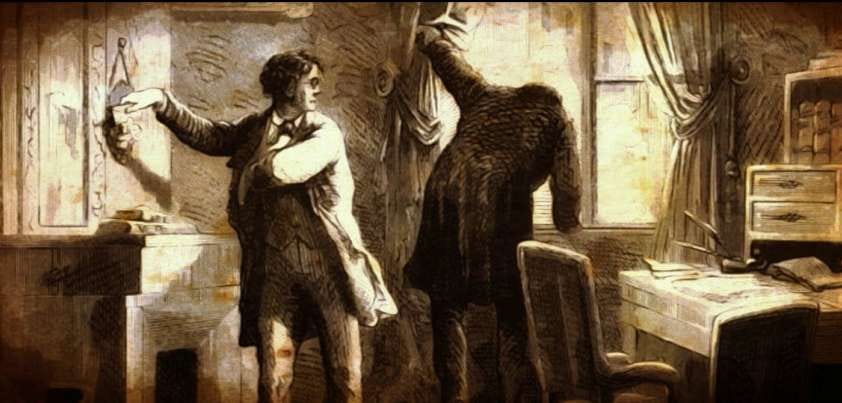
Deleuze explains (I will paste a long block of text here):
If the series that the object = x traverses necessarily present relative displacements in relation to each other, this is so because the relative places of their terms in the structure depend first on the absolute place of each, at each moment, in relation to the object = x that is always circulating, always displaced in relation to itself.
It is in this sense that the displacement, and more generally all the forms of exchange, does not constitute a characteristic added from the outside, but the fundamental property that allows the structure to be defined as an order of places subject to the variation of relations.
The whole structure is driven by this originary Third, but that also fails to coincide with its own origin.
Distributing the differences through the entire structure, making the differential relations vary with its displacements, the object = x constitutes the differenciating element of difference itself.
As the object = x moves through the series, the series themselves change because the position of the element depends on its relation to object = x. The displacement of this object is not external to the structure itself. When Deleuze speaks of the “originary Third,” he is referring to the symbolic object that circulates through the chain. This Third does not have a fixed position or any kind of identity becomes it remains without a signified. The point that clarifies this the most it: “the object = x constitutes the differenciating element of difference itself.”
Because this is relatively confusing, Deleuze uses a simple example:
Games need the empty square, without which nothing would move forward or function.
The object = x is not distinguishable from its place, but it is characteristic of this place that it constantly displaces itself, just as it is characteristic of the empty square to jump ceaselessly.
Without an empty square, games would be static and the pieces would be immobile. To be clear, object = x is identified via the space it is on, but the symbolic object is constantly being displaced. Deleuze notes many examples of this :
Lacan invokes the dummy-hand in bridge, and in the admirable opening pages of The Order of Things, where he describes a painting by Velasquez, Foucault invokes the place of the king, in relation to which everything is displaced and slides, God, then man, without ever filling it.
Ranging from Lacan to Foucault, there is always an empty square that is being displaced. This empty square is necessary for structuralism:
No structuralism is possible without this degree zero.
Deleuze continues by giving other examples related to writing, anthropology, and language:
Phillipe Sollers and Jean-Pierre Faye like to invoke the blind spot [tache aveugle], so designating this always mobile point which entails a certain blindness, but in relation to which writing becomes possible, because series organize themselves therein as genuine “literemes” [litteremes]. In his effort to elaborate a concept of structural or metonymic causality, J.-A. Miller borrows from Frege the position of a zero, defined as lacking its own identity, and which conditions the serial constitution of numbers.
And even Levi-Strauss, who in certain respects is the most positivist among the structuralists, the least romantic, the least inclined to welcome an elusive element, recognized in the “mana” or its equivalents the existence of a “floating signifier,” with a symbolic zero value circulating in the structure. In so doing, he connects with Jakobson’s zero phoneme which does not by itself entail any differential character or phonetic value, but in relation to which all the phonemes are situated in their own differential relations.
This is all relatively straightforward. The “blind spot,” “litereme,” and “ mana” are all equivalent to object = x in their respective fields.

Deleuze continues:
If it is true that structural criticism has as its object the determination of “virtualities” in language which pre-exist the work, the work is itself structural when it sets out to express its own virtualities.
From the perspective of structural criticism, it is imperative to examine the underlying structure of language which pre-exist the written work. The structures are understood virtually. A structuralist critic is not analyzing what an author writes but the structure by which they are able to write it. A work itself is defined as structural when seeks to make visible the very structure that produced the content. Here are some examples:
Lewis Carroll, [James] Joyce, invented “port-manteau” words, or more generally, esoteric words, to ensure the coincidence of verbal sound series and the simultaneity of associated story series.
In Finnegan’s Wake, it is again a letter which is Cosmos, and which reunites all the series of the world.
In Lewis Carroll’s works, the portmanteau word connotes at least two basic series (speaking and eating, verbal series and alimentary series) that can themselves be subdivided, such as the Snark.
Lewis Carroll and James Joyce’s use of language expresses the very structure by which their written work emerges. Portmanteau words are words that are combinations of two or more words. Deleuze notes the structural function of portmanteau words as these words bring various series together, allowing different narratives to coalesce into a single story. Furthermore:
It is incorrect to say that such a word has two meanings; in fact, it is of another order than words possessing a sense.
It is the nonsense which animates at least the two series, but which provides them with sense by circulating through them.
It is this nonsense, in its ubiquity, in its perpetual displacement, that produces sense in each series, and from one series to another, and that ceaselessly dislocates [decaler] the series in relation to each other.
Portmanteau words do not have two meanings; these words exist within their own order. They are a kind of nonsense that allows for animation between various series.
This word is the word = x in so far as it designates the object = x, the problematic object.
Portmanteau words behave like object = x, which is why Deleuze calls them word = x. The portmanteau word does not have a stable meaning, but allows for new interpretations and meanings to emerge between the series.
As word = x, it traverses a series determined as that of the signifier; but at the same time, as object = x, it traverses the other series determined as that of the signified.
It never ceases at once to hollow out and to fill in the gap between the two series.
Levi-Strauss shows this in relation to the “mana,” that he assimilates to the words “thingamajig” [true] or “thingie” [machin].
To clarify, there are two manners to conceptualize portmanteau words. From one perspective, as word = x, the word travels from one series to another — just like a general signifier. But as object = x, it serves as having no fixed meanings, allowing for variability within the chain. This relates directly to Levi-Strauss’ concept of mana in his anthropological studies.
As we have seen, this is how nonsense is not the absence of signification but, on the contrary, the excess of sense, or that which provides the signifier and signified with sense.
Sense here emerges as the effect of the structure’s functioning, in the animation of its component series. And no doubt, portmanteau-words are only one device among others that ensure this circulation.
Nonsense — such as portmanteau words — does not imply an absence of signification. There is, rather, too much signification through this creation of a new word with previous words. Once again, Deleuze references more thinkers and disciplines that this concept relates to:
The techniques of Raymond Roussel, as Foucault has analyzed them, are of another nature, founded on differential phonemic relations, or on even more complex relations.
In Mallarme’s works, we find systems of relations between series, and the moving parts which animate them, of yet another type.
So … what is our purpose here? Deleuze writes:
Our purpose is not to analyze the whole set of devices which have constituted and are still constituting modern literature, making use of an entire topography, an entire typography of the “book yet to come” [livre a venir]; our goal is only to indicate in all cases the efficacy of this two-sided empty square, at once word and object.
He makes clear that the purpose here is to not analyze every technique that constitutes the field of modern literature. Deleuze is not attempting to “make use of an entire topography” to predict all kinds of books that are yet to come. Instead, the goal is to focus on the empty square that constitutes this system of writing.
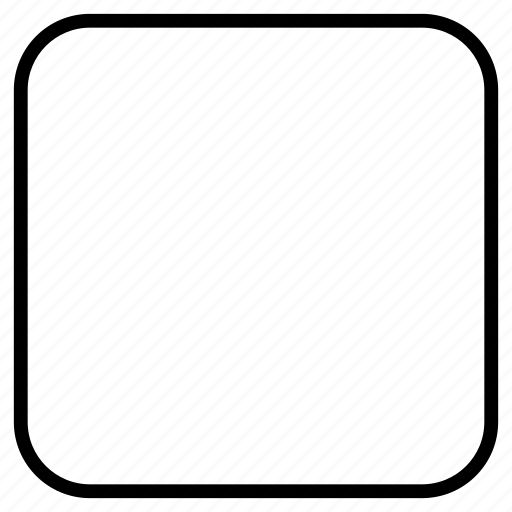
Deleuze remarks:
What does it consist of, this object = x?
Is it and must it remain the perpetual object of a riddle, the perpetuum mobile!
This would be a way of recalling the objective consistency that the category of the problematic takes on at the heart of structures.
And in the long run, it is good that the question How do we recognize structuralism? leads to positing something that is not recognizable or identifiable.
He asks what object = x consists of. Might object = x always be indiscernable? But, if this were true, Deleuze makes an important point: what would be the importance of defining structuralism if the terms of it are unidentifiable? Deleuze moves to examine Lacan’s response to these questions:
Let us consider Lacan’s psychoanalytic response: the object = x is determined as phallus.
But this phallus is neither the real organ, nor the series of associable or associated images: it is the symbolic phallus.
Lacan defines the object = x as the phallus. This does not indicate a physiological organ nor any associated image — “it is the symbolic phallus.” The phallus is the pure signifier.
However, it is indeed sexuality that is in question, a question of nothing else here, contrary to the pious and ever-renewed attempts in psychoanalysis to renounce or minimize sexual references.
But the phallus appears not as a sexual given or as the empirical determination of one of the sexes.
It appears rather as the symbolic organ that founds sexuality in its entirety as system or structure, and in relation to which the places occupied variously by men and women are distributed, as also the series of images and realities.
Deleuze notes that sexuality is in question within the structuralist framework of psychoanalysis, particularly through the function of the symbolic phallus. However, he emphasizes that the phallus does not represent sexuality in any empirics or biological sense. The phallus is, rather, a symbolic element that structures the symbolic chain — which itself is understood as sexuality. Essentially, the phallus serves as a symbolic position around which sexuality is structured. Deleuze states:
In designating the object = x as phallus, it is thus not a question of identifying this object, of conferring to it an identity, which is repellant to its nature.
Quite the contrary, for the symbolic phallus is precisely that which does not coincide with its own identity, always found there where it is not since it is not where one looks for it, always displaced in relation to itself, from the side of the mother.
Once again, the object = x as phallus does not imply a physiological organ. The pure signifier is not where someone looks for it; it has no signified and is always circulating through the symbolic chain. Thus:
In this sense, it is certainly the letter and the debt, the handkerchief or the crown, the Snark and the “mana.”
Father, mother, etc., are symbolic elements held in differential relations.
Even though the pure signifier appears as different objects in different stories, Deleuze notes that the psychoanalytic depiction of the phallus is somewhat different:
But the phallus is quite another thing, the object = x that determines the relative place of the elements and the variable value of relations, making a structure of the entirety of sexuality.
The relations vary as a function of the displacements of the object = x, as relations between “partial drives” constitutive of sexuality.
The phallus makes a “structure of the entirety of sexuality.” It determines the placement and meaning of all elements within a chain. The phallus making the structure appears to imply that it distributes lack to all elements within the chain — which seems to be different than the other instances of the empty square described.
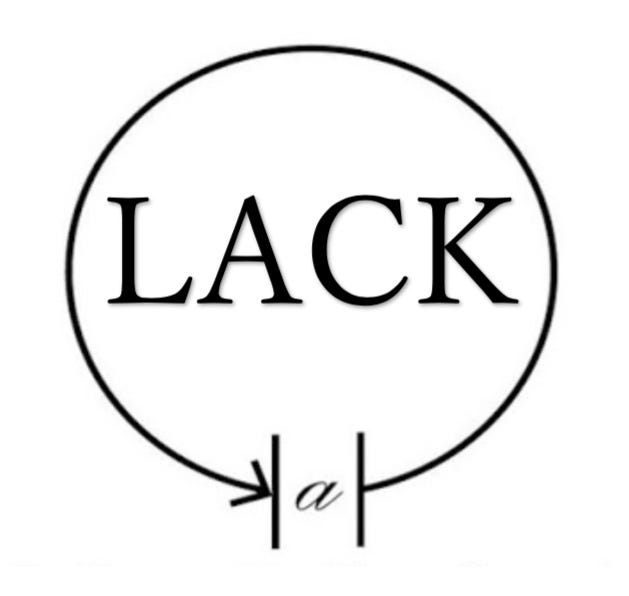
Deleuze writes:
Obviously the phallus is not a final word, and is even somewhat the locus of a question, of a “demand” that characterizes the empty square of the sexual structure.
The phallus is not an ultimate answer; it is not a “final word.” Instead, the phallus is a “locus of question,” meaning that it delineates a gap around meaning with elements circulating around it.
Questions, like answers, vary according to the structure under consideration, but never do they depend on our preferences, or on an order of abstract causality.
Meaning is determined by the structure that produces it. Deleuze is highlighting how questions and answers are not the result of an abstraction. Deleuze moves on to discussion economic structures:
It is obvious that the empty square of an economic structure, such as commodity exchange, must be determined in quite another way.
It consists of “something” which is reducible neither to the terms of the exchange, nor to the exchange relation itself, but that forms an eminently symbolic third term in perpetual displacement, and as a function of which the relational variations will be defined.
Such is value as expression of a “generalized labor,” beyond any empirically observable quality, a locus of the question that runs through or traverses the economy as structure.
Akin to psychoanalysis, there is an empty square of an economic structure, specifically “commodity exchange” within capitalism. This “something” that the empty square consists of cannot be reduced to the elements of the economic system nor to the differential relationship between elements. This empty square is what allows for the differentiation between elements in the first place as all elements are positioned in relation to this empty square by which they derive their meaning. Thus, commodities themselves are defined in relation to this empty square.
Deleuze continues:
A more general consequence follows from this, concerning the different “orders.”
From a structuralist perspective, it is no doubt unsatisfactory to resurrect the problem of whether there is a structure that determines all the others in the final instance.
For example, which is first, value or the phallus, the economic fetish or the sexual fetish?
For several reasons, these questions are meaningless.
From the perspective of structuralism, it is problematic to question whether there is a structure underlying all other structure. We tend to see this with debates about root causes. When people presume or posit that capitalism preceded the phallus or the phallus preceded capitalism, Deleuze notes that this is a meaningless conversation. As Deleuze writes:
All structures are infrastructures.
The structural orders — linguistic, familial, economic, sexual, etc. — are characterized by the form of their symbolic elements, the variety of their differential relations, the species of their singularities, finally and, above all, by the nature of the object = x that presides over their functioning.
This is functionally a summary of what has been discussed thus far. Each structure serves as a foundation in its own right. No matter the order — ranging from language to sexuality — we find symbolic elements to compose a chain, with each element being defined in relation to the others. This structure is shaped by singularities or points that define it. Finally, there is an object = x that organizes the entire chain. Deleuze explains:
However, we could only establish an order of linear causality from one structure to another by conferring on the object = x in each case the type of identity that it essentially repudiates.
Between structures, causality can only be a type of structural causality.
In each structural order, certainly, the object = x is not at all something unknowable, something purely undetermined; it is perfectly determinable, including within its displacements and by the mode of displacement that characterizes it.
It is simply not assignable: that is, it cannot be fixed to one place, nor identified with a genre or a species.
Deleuze notes an inherent impossibility in determining a linear causality between structures. In order to assume that one structure is the cause of another, this would presume the object = x as having a fixed identity. There would have to be something in the first structure to cause the second structure, indicating a stable travel from the first to second structure. But as we have seen, the object = x cannot be fixed. However, within a particular order, Deleuze explains that the object = x is not unknowable, as it is determined within the structure; it is determined by its very displacement.
Rather, [the object = x] constitutes itself the ultimate genre of the structure or its total place: it thus has no identity except in order to lack this identity, and has no place except in order to be displaced in relation to all places.
As a result, for each order of structure the object = x is the empty or perforated site that permits this order to be articulated with the others, in a space that entails as many directions as orders.
The object = x has an identity that is constituted by a lack of identity; it has a place that is understood as the displacement of place itself. Because of this identity, the way in which we are able to compare structure — or view structures as interconnected — is due to this object = x being essential to every structure. He writes:
The orders of the structure do not communicate in a common site, but they all communicate through their empty place or respective object = x.
This is why, despite several of Levi-Strauss’s hasty pages, no privilege can be claimed for ethnographic social structures, by referring the psychoanalytic sexual structures to the empirical determination of a more or less de-socialized individual.
Even linguistic structures cannot pass as symbolic elements or as ultimate signifiers.
As Deleuze says, all structures “communicate through their empty place.” He references Levi-Strauss’ anthropological investigations and linguistics to prove this point.
Precisely to the extent that the other structures are not limited simply to applying by analogy methods borrowed from linguistics, but discover on their own account veritable languages, be they nonverbal, always entailing their signifiers, their symbolic elements and differential relations.
Posing, for example, the problem of the relations between ethnography and psychoanalysis, Foucault is right to say: “They intersect at right angles; for the signifying chain by which the unique experience of the individual is constituted is perpendicular to the formal system on the basis of which the significations of a culture are constituted: at any given instant, the structure proper to individual experience finds a certain number of possible choices (and of excluded possibilities) in the systems of the society; conversely, at each of their points of choice the social structures encounter a certain number of possible individuals (and others who are not).”
Deleuze notes that structuralism may have its origin in linguistics, but we cannot reduce all disciplines to operating like a language. This would result in a reductive approach. Instead, each domain has their own kind of language — even nonverbal ones. He discusses Foucault’s analysis of the relationship between ethnography and psychoanalysis to isolate how each field has their own language. Deleuze concludes this sixth criterion by providing a summary of the object = x, or the empty square:
And in each structure, the object = x must be disposed to give an account 1) of the way in which it subordinates within its order the other orders of structure, that then only intervene as dimensions of actualization; 2) of the way in which it is itself subordinated to the other orders in their own order (and no longer intervenes except in their own actualization); 3) of the way in which all the objects = x and all the orders of structure communicate with one another, each order defining a dimension of the space in which it is absolutely primary; 4) of the conditions in which, at a given moment in history or in a given case, a particular dimension corresponding to a particular order of the structure is not deployed for itself and remains subordinated to the actualization of another order (the Lacanian concept of “foreclosure” would again be of decisive importance here).

VII. Final Criteria: From the Subject to Practice
Deleuze begins explaining the seventh criteria by saying:
In one sense, places are only filled or occupied by real beings to the extent that the structure is “actualized.” But in another sense, we can say that places are already filled or occupied by symbolic elements, at the level of the structure itself.
And the differential relations of these elements are the ones that determine the order of places in general. Thus there is a primary symbolic filling-in [remplissement], before any filling-in or occupation by real beings.
He provides a concise summary of what has been discussed until this point. Real beings must occupy specific positions and functions present within the symbolic chain. And, these elements are defined differentially, giving them a specific place within the structure. However, we cannot forget the empty square:
Except that we again find the paradox of the empty square. For this is the only place that cannot and must not be filled, were it even by a symbolic element.
It must retain the perfection of its emptiness in order to be displaced in relation to itself, and in order to circulate throughout the elements and the variety of relations. As symbolic, it must be for itself its own symbol, and eternally lack its other half that would be likely to come and occupy it. (This void is, however, not a non-being; or at least this non-being is not the being of the negative, but rather the positive being of the “problematic,” the objective being of a problem and of a question.)
The empty square is paradoxical — it occupies a space in the chain, yet is always circulating. It cannot be filled because it lacks a signified. Deleuze highlights that this empty square is a void, but that does not entail a kind of non-existence. The position of the empty square serves to construct the problem or question of the structure, leaving the structure open to interpretation. He writes:
This is why Foucault can say: “It is no longer possible to think in our day other than in the void left by man’s disappearance. For this void does not create a deficiency; it does not constitute a lacuna that must be filled in. It is nothing more and nothing less than the unfolding of a space in which it is once more possible to think.”
This reference to Foucault echoes the beginning of the essay regarding the death of God and ultimate death of man.
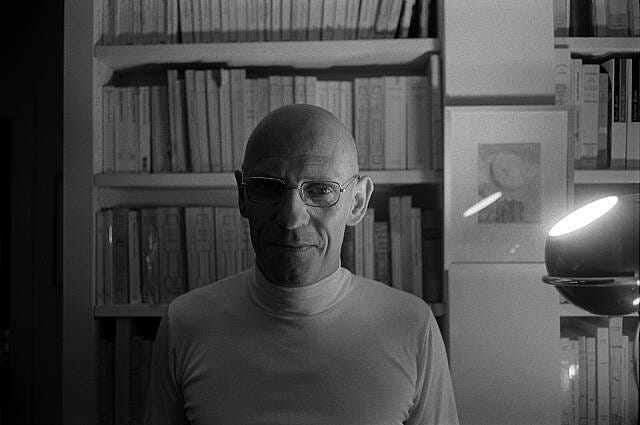
Deleuze continues:
Nevertheless, if the empty square is not filled by a term, it is nevertheless accompanied by an eminently symbolic instance which follows all of its displacements, accompanied without being occupied or filled.
And the two, the instance and the place, do not cease to lack each other, and to accompany each other in this manner.
The empty square is not filled by a term because it lacks a signified. However, it carries with it the capacity of the elements in the chain to continually change meaning in relation to one another. The displacement of the empty square is accompanied the time and place of the square’s displacement. The question becomes what follows the empty place:
The subject is precisely the agency [instance] which follows the empty place: as Lacan says, it is less subject than subjected [assujetti] — subjected to the empty square, subjected to the phallus and to its displacements.
Its agility is peerless, or should be.
Thus, the subject is essentially intersubjective.
This analysis is wholly present throughout Lacan’s Seminar on The Purloined Letter. The subject does not exist independently. The subject is fundamentally intersubjective, related to all other elements in the chain. Deleuze writes:
To announce the death of God, or even the death of man is nothing. What counts is how. Nietzsche showed already that God dies in several ways; and that the gods die, but from laughter, upon hearing one god say that he is the Only One.
When we speak of the death of God, the fact itself does not matter. What matters is how the death of God occurs. It is evident that Deleuze is arguing that the death of God or man can only occur when God or man is deemed the “Only One.” As structuralism isolates, there is no One — the elements in a chain are all interconnected:
Structuralism is not at all a form of thought that suppresses the subject, but one that breaks it up and distributes it systematically, that contests the identity of the subject, that dissipates it and makes it shift from place to place, an always nomad subject, made of individuations, but impersonal ones, or of singularities, but pre-individual ones.
This is the sense in which Foucault speaks of “dispersion”; and Levi-Strauss can only define a subjective agency as depending on the Object conditions under which the systems of truth become convertible and, thus, “simultaneously receivable to several different subjects.”
Structuralism “contests the identity of the subject,” by not assuming the subject as already given. The subject is constantly changing as the empty square circulates throughout the signifying chain. The subject is described as a nomad because it is always in a state of flux. Foucault and Levi-Strauss are praised by Deleuze for their discovery of this fact within their given domains.
Henceforth, two great accidents of the structure may be defined.
Either the empty and mobile square is no longer accompanied by a nomad subject that accentuates its trajectory, and its emptiness becomes a veritable lack, a lacuna.
Or just the opposite, it is filled, occupied by what accompanies it, and its mobility is lost in the effect of a sedentary or fixed plenitude.
The are two accidents that can be attributed to the structure:
On one hand, the first accident is that the empty square may not be accompanied by the subject, making the emptiness of the empty square a “veritable lack.” On the other hand, the second accident is that the empty square becomes filled by whatever accompanies it, making it impossible to be mobile as it now is filled. (In psychoanalysis, it is evident that this empty square is constituted by a veritable lack.)
Deleuze explains:
One could just as well say, in linguistic terms, either that the “signifier” has disappeared, that the stream [flot] of the signified no longer finds any signifying element that marks it, or that the “signified” has faded away, that the chain of the signifier no longer finds any signified that traverses it: the two pathological aspects of psychosis.
One could say further, in theo-anthropological terms, that either God makes the desert grow and hollows out a lacuna in the earth, or that man fills it, occupies the place, and in this vain permutation makes us pass from one accident to the other: this being the reason why man and God are the two sicknesses of the earth, that is to say, of the structure.
It appears that Deleuze is showing a kind of “damned if you do, damned if you don’t” mentality. If the signifier is denied entrance into the signifying chain, psychosis develops. Yet, if the signifier is accepted and the empty square becomes filled, we find the replacement of man in the place of God — a true sickness through the upholding of a stable subject. Ultimately:
What is important is knowing according to what factors and at what moments these accidents are determined in structures of one order or another.
Structuralism is concerned with the factors that contribute to accidents within a structure.
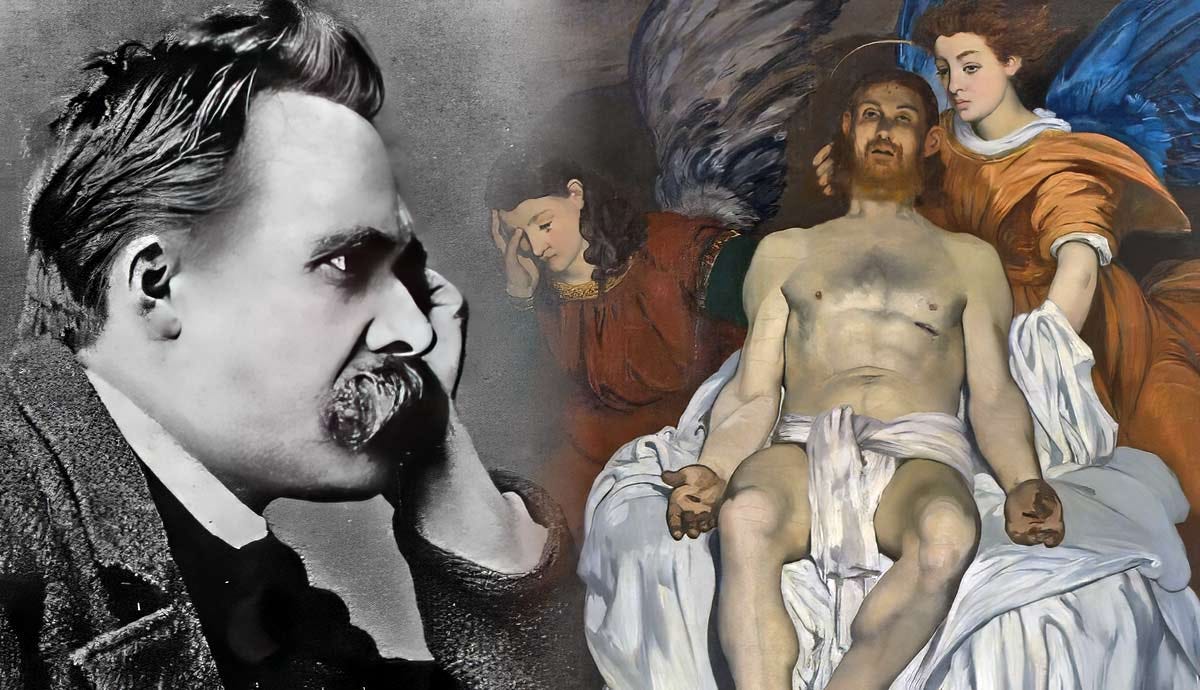
To continue:
Let us again consider the analyses of Althusser and his collaborators: on the one hand, they show in the economic order how the adventures of the empty square (Value as object = x) are marked by the goods, money, the fetish, capital, etc., that characterize the capitalist structure. On the other hand, they show how contradictions are thus born in the structure.
Deleuze examines the empty square within capitalism. This empty square — delineated as “Value as object = x”) — is marked by goods, money, etc. However, as this empty square is always circulating, an apparent contradiction arises: value appears to be everywhere and nowhere within capitalism. Deleuze’s reading of Althusser shows how contradictions within capitalism arise. Furthermore:
Finally, they show how the real and the imaginary — that is, the real beings who come to occupy places and the ideologies which express the image that they make of it — are narrowly determined by the play of these structural adventures and the contradictions resulting from it.
Not that the contradictions are at all imaginary: they are properly structural, and qualify the effects of the structure in the internal time that is proper to it.
Thus it cannot be said that the contradiction is apparent, but rather that it is derived: it derives from the empty place and from its becoming in the structure.
Ultimately, real beings — such as workers, capitalists, etc. — occupy places and specific ideologies that compose their imaginary identifications (hard worker, rich, poor, etc.). These beings are shaped by the perpetual contradictions within a system because they are defined in relation to a pure signifier that is always circulating. However, these contradictions themselves are not at all imaginary. The contradictions materially exist and are necessary to the structure itself; they are not “apparent” in the sense that they randomly appear, but they are integral to the structure. To be clear:
As a general rule, the real, the imaginary and their relations are always engendered secondarily by the functioning of the structure, which starts with having its primary effects in itself
The structure exists virtually and becomes actualized by specific elements occupying positions and functions within the chain. Thus, the real being and imaginary identifications integral to a system are “engendered secondarily,” as they are not a priori to the virtuality.
This is why what we were earlier calling accidents does not at all happen to the structure from the outside.
On the contrary, it is a matter of an “immanent” tendency, of ideal events that are part of the structure itself, and that symbolically affect its empty square or subject.
We call them “accidents” in order better to emphasize not a contingent or exterior character, but this very special characteristic of the event, interior to the structure in so far as the structure can never be reduced to a simple essence.
Once again, accidents do not occur from outside the structure. These accidents and contradictions are integral to the system because of the empty square. The structure is not contingent on something from the outside — that would allow the structure to be affected. Instead, the term “accidents” details something intrinsic to the structure.
To continue:
Henceforth, a set of complex problems are posed for structuralism, concerning structural “mutations” (Foucault) or “forms of transition” from one structure to another (Althusser).
It is always as a function of the empty square that the differential relations are open to new values or variations, and the singularities capable of new distributions, constitutive of another structure.
The contradictions must yet be “resolved,” that is, the empty place must be rid of the symbolic events that eclipse it or fill it, and be given over to the subject which must accompany it on new paths, without occupying or deserting it.
Most of this is a summary of what was said prior. Accidents and translations from one structure to another are problems posed for structuralism. The empty square is what allows for differential relations that are variable, and have the capacity to be attributed to another structure. All structures are related because they require an empty square; this empty square is intrinsic to all structures, making structures inherently interrelated.
Deleuze states:
Thus, there is a structuralist hero: neither God nor man, neither personal nor universal, it is without an identity, made of non-personal individuations and pre-individual singularities.
It assures the break-up [I’e’clatement] of a structure affected by excess or deficiency; it opposes its own ideal event to the ideal events that we have just described.
The “structuralist hero” for Deleuze is characterized as not having an identity. This is the subject defined intersubjectively via the empty square. This hero is responsible for the displacement that occurs within the structure. Furthermore:
For a new structure not to pursue adventures that again are analogous to those of the old structure, not to cause fatal contradictions to be reborn, depends on the resistant and creative force of this hero, on its agility in following and safeguarding the displacements, on its power to cause relations to vary and to redistribute singularities, always casting another throw of the dice.
Deleuze warns that when new structures arise, they may fall into the same patterns as an older structure. If a new structure repeats the same logics of the old, the same internal contradictions will arise. In order to avoid this mistake, Deleuze notes the importance of the “resistant and creative force” of the structuralist hero, which would allow for the resistance of closure and variation of the structure. The reference to the “throw of dice” is found all throughout Deleuze’s work — such as with Mallarmé and Deleuze’s book Nietzsche and Philosophy. This dice throw highlights the kind of gamble or uncertainty associated with the structuralist hero.
Deleuze explains:
This mutation point precisely defines a praxis, or rather the very site where praxis must take hold.
For structuralism is not only inseparable from the works that it creates, but also from a practice in relation to the products that it interprets.
Whether this practice is therapeutic or political, it designates a point of permanent revolution, or of permanent transfer.
When Deleuze references a “mutation point,” he is describing the very point within a structure that allows the structure to change. It is a very real praxis. Structuralism is fundamentally related to its actualization, but it also stresses the necessity of interpretation. There is no finality to this system as it is always changing. Whether it be in therapeutic psychoanalytic practices, or political ones, structures are always in a state of flux.
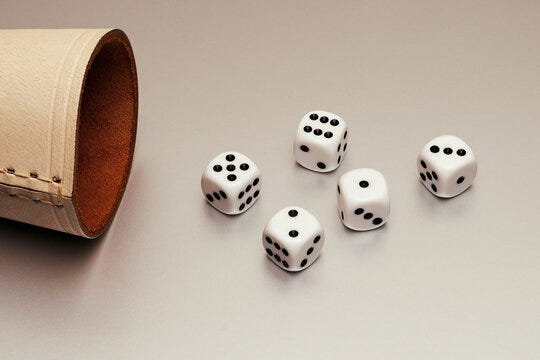
In the last paragraph, Deleuze sums up the seventh criteria:
These last criteria, from the subject to practice, are the most obscure — the criteria of the future.
Across the six preceding characteristics, we have sought only to juxtapose a system of echoes between authors who are very independent from each other, exploring very diverse domains, and as diverse as the theory that they themselves propose regarding these echoes.
He emphasizes how the seventh criteria is the “criteria of the future.” It allows for variability and complete change of the structure while abiding by the framework of the six preceding characteristics. And, this applies to all domains.
At the different levels of the structure, the real and the imaginary, real beings and ideologies, sense and contradiction, are “effects” that must be understood at the conclusion of a “process,” of a properly structural, differenciated production: strange static genesis for physical (optical, sound, etc.) “effects.”
The real beings that occupy positions within a structure, along with their imaginary identifications, are fundamental effects of a process of circulation. Once again, Deleuze notes the importance of conceptualizing the structure at the level of the virtual. Finally, Deleuze writes:
Books against structuralism (or those against the “New Novel”) are strictly without importance; they cannot prevent structuralism from exerting a productivity which is that of our era.
No book against anything ever has any importance; all that counts are books for something, and that know how to produce it.
If a book is against structuralism, Deleuze find it to be unimportant. Structuralism defines the era that Deleuze is in while writing this essay. What matters are books that are “for something,” meaning books that defend a particular structure and its very production.
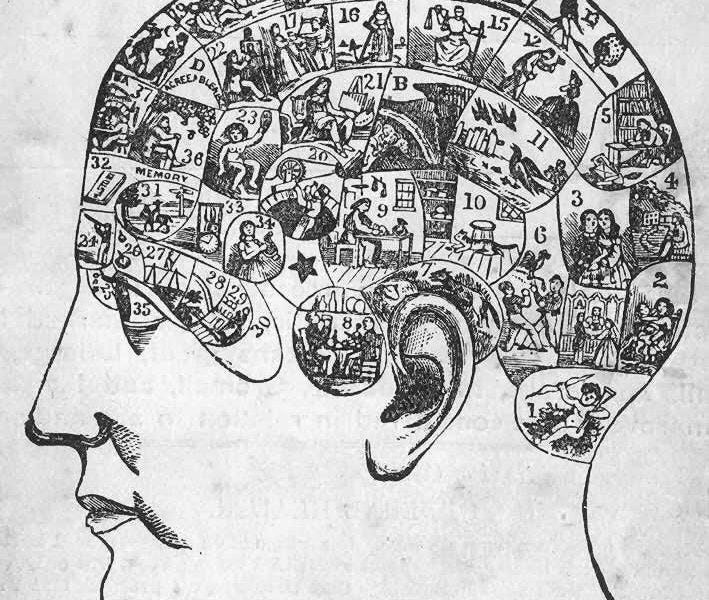
Leave a Reply